 Search by Keyword
Sign Up Below for our MONTHLY BEATLES TRIVIA QUIZ!
|
“ELEANOR RIGBY”
(John Lennon – Paul McCartney)
 “I don’t think we ever try to establish trends. We try to keep moving forward and do something different.” This quote from Paul McCartney in 1966 typifies the insistent "forward movement" attitude that became The Beatles creed, especially from that year onward. While seemingly every move they made musically did indeed become the new “trend” by being imitated by anyone desirous of making their mark on the charts, their objective was simply to be innovative for innovation's sake. “I don’t think we ever try to establish trends. We try to keep moving forward and do something different.” This quote from Paul McCartney in 1966 typifies the insistent "forward movement" attitude that became The Beatles creed, especially from that year onward. While seemingly every move they made musically did indeed become the new “trend” by being imitated by anyone desirous of making their mark on the charts, their objective was simply to be innovative for innovation's sake.
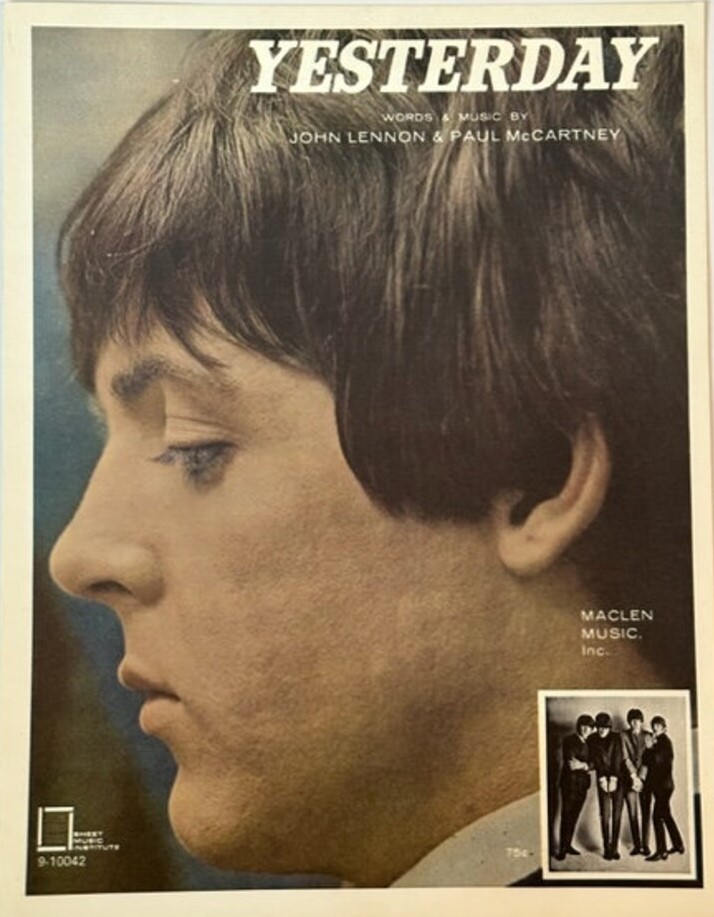 Unwittingly, they topped themselves by taking the previous step forward of “Yesterday,” with its string quartet backdrop to Paul’s acoustic guitar and solo vocal, to the giant leap of a double string quartet playing a classically written score put together by Paul and producer George Martin and no Beatles instrumentation whatsoever. This did not start a “trend,” as it were, but only made the competition drop their jaws in awe, leaving everyone in the dust! “Eleanor Rigby” appeared as the master stroke that revealed The Beatles as above and beyond all of their contemporaries. Unwittingly, they topped themselves by taking the previous step forward of “Yesterday,” with its string quartet backdrop to Paul’s acoustic guitar and solo vocal, to the giant leap of a double string quartet playing a classically written score put together by Paul and producer George Martin and no Beatles instrumentation whatsoever. This did not start a “trend,” as it were, but only made the competition drop their jaws in awe, leaving everyone in the dust! “Eleanor Rigby” appeared as the master stroke that revealed The Beatles as above and beyond all of their contemporaries.
 Gravestone with the name "Eleanor Rigby" as found in Woolton Cemetary, Liverpool
|
Songwriting History
 Research done to spell out the songwriting history of most Beatles songs reveals many interesting details, convincing testimony related from eyewitnesses and the writers themselves settling the matter once and for all. There may be conflicting details unearthed from interviews that cast doubt on some aspects, but overall the reader can get a clear enough picture to understand the general formation of that particular composition. A detailed quote right from "the horse’s mouth" is usually enough to squelch previously conceived ideas the listener may have held for many years. Research done to spell out the songwriting history of most Beatles songs reveals many interesting details, convincing testimony related from eyewitnesses and the writers themselves settling the matter once and for all. There may be conflicting details unearthed from interviews that cast doubt on some aspects, but overall the reader can get a clear enough picture to understand the general formation of that particular composition. A detailed quote right from "the horse’s mouth" is usually enough to squelch previously conceived ideas the listener may have held for many years.
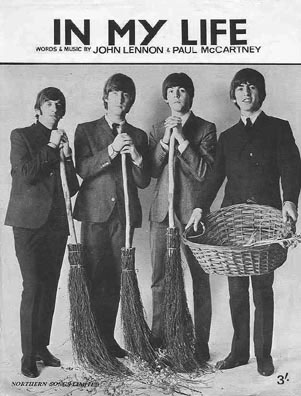 However, the inspiration and construction of “Eleanor Rigby” to get it to the finished state as we know it is quite a complicated task to decipher, one that goes much deeper than "who wrote what" and "when." While there is a general discrepancy between the separate interviews of Lennon and McCartney regarding the classic song “In My Life,” the song under discussion here marks the most ambiguous of all Beatles songs with an abundance of details from various sources that sometimes add up to a harmonious picture but sometimes contradict entirely. However, the inspiration and construction of “Eleanor Rigby” to get it to the finished state as we know it is quite a complicated task to decipher, one that goes much deeper than "who wrote what" and "when." While there is a general discrepancy between the separate interviews of Lennon and McCartney regarding the classic song “In My Life,” the song under discussion here marks the most ambiguous of all Beatles songs with an abundance of details from various sources that sometimes add up to a harmonious picture but sometimes contradict entirely.
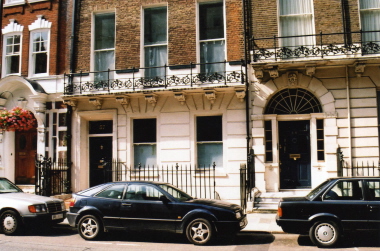 The story starts simply enough from, as Paul’s book “Many Years From Now” attests, him beginning to write the song in the “little music room” in the Asher home at 57 Wimpole Street, London, where he was staying as a live-in guest with his current girlfriend Jane Asher. While many other Beatles classics were at least partially composed in this room (including “I Want To Hold Your Hand”), this one had much more work to be done to it before being deemed complete. The story starts simply enough from, as Paul’s book “Many Years From Now” attests, him beginning to write the song in the “little music room” in the Asher home at 57 Wimpole Street, London, where he was staying as a live-in guest with his current girlfriend Jane Asher. While many other Beatles classics were at least partially composed in this room (including “I Want To Hold Your Hand”), this one had much more work to be done to it before being deemed complete.
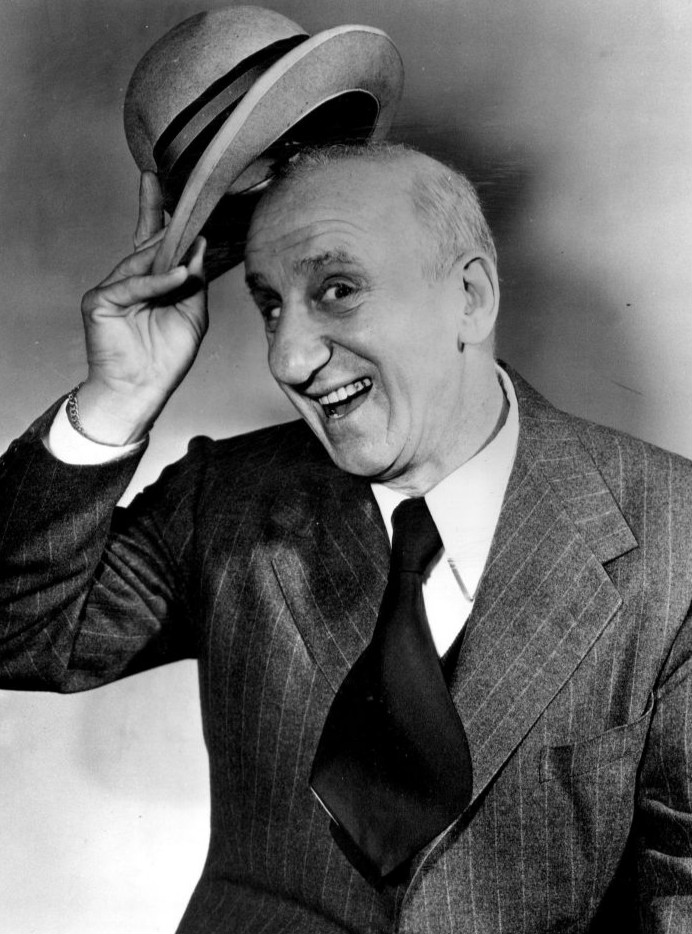 “I was sitting at the piano when I thought of it,” recalls Paul, “just like the comedian Jimmy Durante. The first few bars just came to me, and I got this name in my head – Daisy Hawkins, she picks up the rice in the church where a wedding has been…Those words just fell out like stream-of-consciousness stuff, but they started to set the tone of it all, because you then have to ask yourself, what did I mean? It’s a strange thing to do: most people leave the rice there, unless she’s a cleaner. So there’s a possibility she’s a cleaner, in the church, or is it a little more poignant than that? She might be some lonely spinster of this parish who’s not going to get a wedding, and that was what I chose. So this became a song about lonely people.” “I was sitting at the piano when I thought of it,” recalls Paul, “just like the comedian Jimmy Durante. The first few bars just came to me, and I got this name in my head – Daisy Hawkins, she picks up the rice in the church where a wedding has been…Those words just fell out like stream-of-consciousness stuff, but they started to set the tone of it all, because you then have to ask yourself, what did I mean? It’s a strange thing to do: most people leave the rice there, unless she’s a cleaner. So there’s a possibility she’s a cleaner, in the church, or is it a little more poignant than that? She might be some lonely spinster of this parish who’s not going to get a wedding, and that was what I chose. So this became a song about lonely people.”
 “I knew quite a lot about old people,” Paul continues, "I was a Boy Scout and I often visted local pensioners as a good deed. I used to think it was the right thing to do – I still do, actually – but what I’m saying is, I wasn’t ashamed to go round and ask someone if they wanted me to go the doctor’s for them or to help old ladies across the road. It had been instilled into me that that was a good deed. So I sat with lots of old ladies who chatted about the war and all this stuff, and also, as I fancied myself as a writer, a part of me was getting material. There was a corner of my brain that used to enjoy that kind of thing, building a repertoire of people and thoughts. Obviously writers are always attracted to detail: the lonely old person opening her can of cat food and eating it herself, the smell of the cat food, the mess in her room, her worrying always about cleaning it up, all the concerns of an old person." “I knew quite a lot about old people,” Paul continues, "I was a Boy Scout and I often visted local pensioners as a good deed. I used to think it was the right thing to do – I still do, actually – but what I’m saying is, I wasn’t ashamed to go round and ask someone if they wanted me to go the doctor’s for them or to help old ladies across the road. It had been instilled into me that that was a good deed. So I sat with lots of old ladies who chatted about the war and all this stuff, and also, as I fancied myself as a writer, a part of me was getting material. There was a corner of my brain that used to enjoy that kind of thing, building a repertoire of people and thoughts. Obviously writers are always attracted to detail: the lonely old person opening her can of cat food and eating it herself, the smell of the cat food, the mess in her room, her worrying always about cleaning it up, all the concerns of an old person."
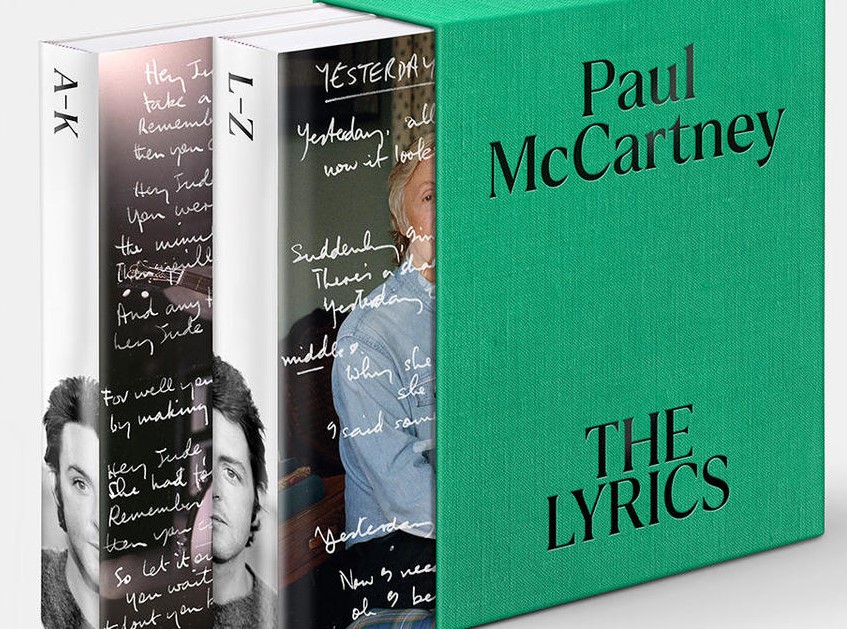 In his 2021 book "The Lyrics," Paul elaborates. "Growing up I knew a lot of old ladies - partly through what was called Bob-a-Job Week, when (Boy) Scouts did chores for a shilling. You'd get a shilling for cleaning out a shed or mowing a lawn. I wanted to write a song that would sum them up. Eleanor Rigby is based on an old lady that I got on with very well. I don't even know how I first met 'Eleanor Rigby,' but I would go around to her house, and not just once or twice. I found out that she lived on her own, so I would go around there and just chat, which is sort of crazy if you think about me being some young Liverpool guy. Later, I would offer to go and get her shopping. She'd give me a list and I'd bring the stuff back, and we'd sit in her kitchen. I still vividly remember the kitchen because she had a little crystal radio set...So I would visit, and just hearing her stories enriched my soul and influencd the songs I would later write." In his 2021 book "The Lyrics," Paul elaborates. "Growing up I knew a lot of old ladies - partly through what was called Bob-a-Job Week, when (Boy) Scouts did chores for a shilling. You'd get a shilling for cleaning out a shed or mowing a lawn. I wanted to write a song that would sum them up. Eleanor Rigby is based on an old lady that I got on with very well. I don't even know how I first met 'Eleanor Rigby,' but I would go around to her house, and not just once or twice. I found out that she lived on her own, so I would go around there and just chat, which is sort of crazy if you think about me being some young Liverpool guy. Later, I would offer to go and get her shopping. She'd give me a list and I'd bring the stuff back, and we'd sit in her kitchen. I still vividly remember the kitchen because she had a little crystal radio set...So I would visit, and just hearing her stories enriched my soul and influencd the songs I would later write."
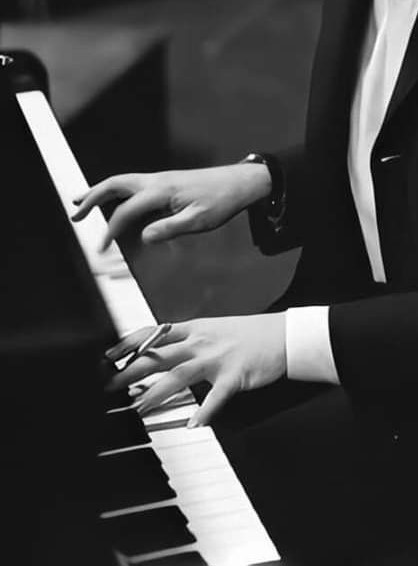 In regards to the melody line chosen, Paul attempts to explain this as well. “I can hear a whole song in one chord. In fact, I think you can hear a whole song in one note, if you listen hard enough. But nobody ever listens hard enough. OK, so that’s the Joan of Arc bit…I wrote it at the piano, just vamping an E-major chord: letting that stay as a vamp and putting a melody over it, just danced over the top of it. It has almost Asian Indian rhythms…I couldn’t think of much more, so I put it away for a day.” In regards to the melody line chosen, Paul attempts to explain this as well. “I can hear a whole song in one chord. In fact, I think you can hear a whole song in one note, if you listen hard enough. But nobody ever listens hard enough. OK, so that’s the Joan of Arc bit…I wrote it at the piano, just vamping an E-major chord: letting that stay as a vamp and putting a melody over it, just danced over the top of it. It has almost Asian Indian rhythms…I couldn’t think of much more, so I put it away for a day.”
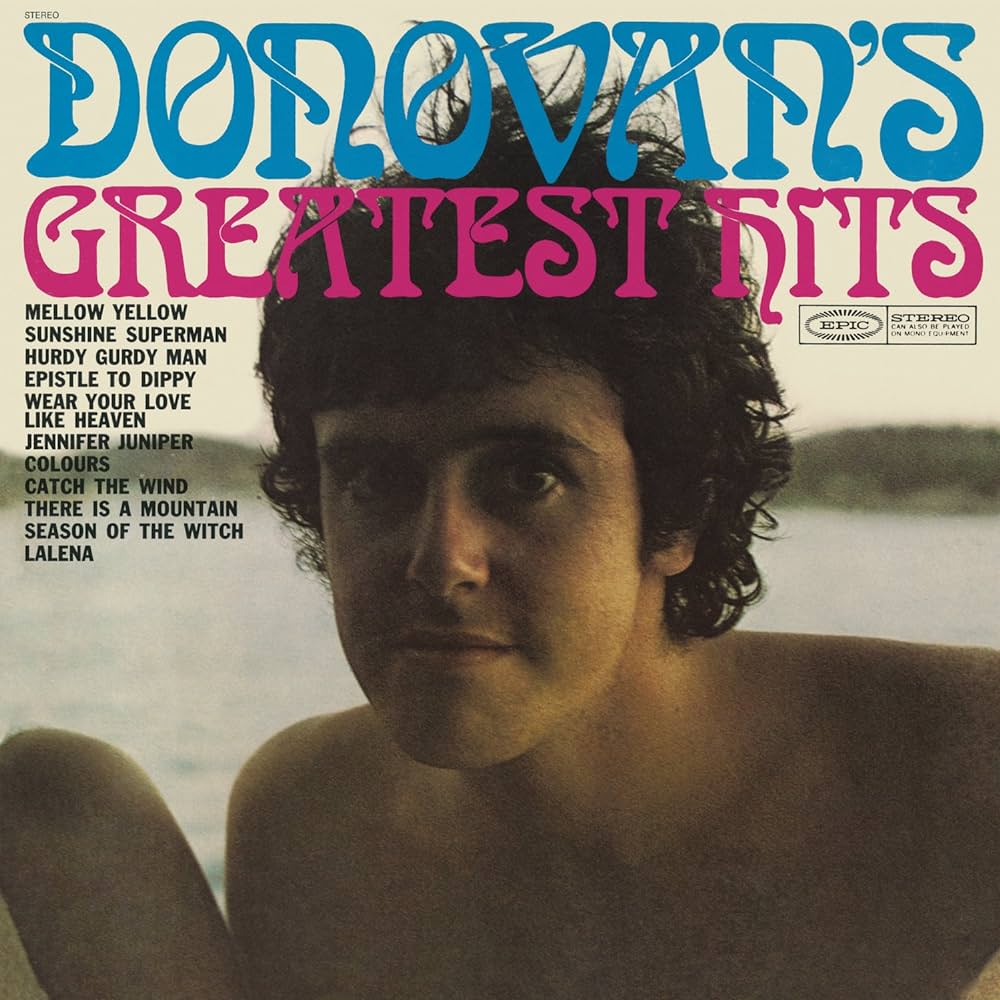 Even though it was just a sketch of a song at that point, McCartney not even liking the name Daisy Hawkins, he had enough of a framework written to play it to others, singer and friend Donovan Leitch being one of them. Since he lived nearby in Maida Vale, Paul dropped by and premiered the song for him. “One day I was on my own in the pad running through a few tunes on my Uher tape recorder,” Donovan recalls. "The doorbell rang. It was Paul on his own. We jammed a bit. He played me a tune about a strange chap…the protagonist…called ‘Ola Na Tungee,’ ‘Ola Na Tungee / Blowing his mind in the dark / with a pipe full of clay / no-one can say’…The words hadn’t yet come out right for him." Even though it was just a sketch of a song at that point, McCartney not even liking the name Daisy Hawkins, he had enough of a framework written to play it to others, singer and friend Donovan Leitch being one of them. Since he lived nearby in Maida Vale, Paul dropped by and premiered the song for him. “One day I was on my own in the pad running through a few tunes on my Uher tape recorder,” Donovan recalls. "The doorbell rang. It was Paul on his own. We jammed a bit. He played me a tune about a strange chap…the protagonist…called ‘Ola Na Tungee,’ ‘Ola Na Tungee / Blowing his mind in the dark / with a pipe full of clay / no-one can say’…The words hadn’t yet come out right for him."
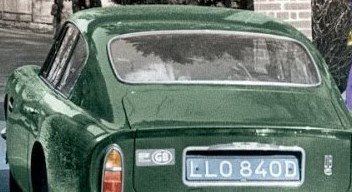 As a sidenote to the events of this day at Donovan Leitch's house, McCartney nearly escaped being arrested by the police. As detailed in author Craig Brown's book "150 Glimpses Of The Beatles," Paul had parked his car illegally right in front of Donovan's house, protruding out of the designated spot with the doors open and the radio blaring. Donovan answered the door when the policeman knocked, and when Paul appeared at the door when it was determined it was his vehicle, the cop stated, "Oh, it's you, Mr. McCartney. Is this your car, a sports car?" He proceeded to ask Paul for the keys so as to park it in a proper parking spot himself and then returned his keys and went on his way. Little did he know that the policeman could have busted them for marijuana possession and being under its influence at the time, let alone for a parking violation. After this interuption, Paul and Donovan went back to working on this early version of "Eleanor Rigby." As a sidenote to the events of this day at Donovan Leitch's house, McCartney nearly escaped being arrested by the police. As detailed in author Craig Brown's book "150 Glimpses Of The Beatles," Paul had parked his car illegally right in front of Donovan's house, protruding out of the designated spot with the doors open and the radio blaring. Donovan answered the door when the policeman knocked, and when Paul appeared at the door when it was determined it was his vehicle, the cop stated, "Oh, it's you, Mr. McCartney. Is this your car, a sports car?" He proceeded to ask Paul for the keys so as to park it in a proper parking spot himself and then returned his keys and went on his way. Little did he know that the policeman could have busted them for marijuana possession and being under its influence at the time, let alone for a parking violation. After this interuption, Paul and Donovan went back to working on this early version of "Eleanor Rigby."
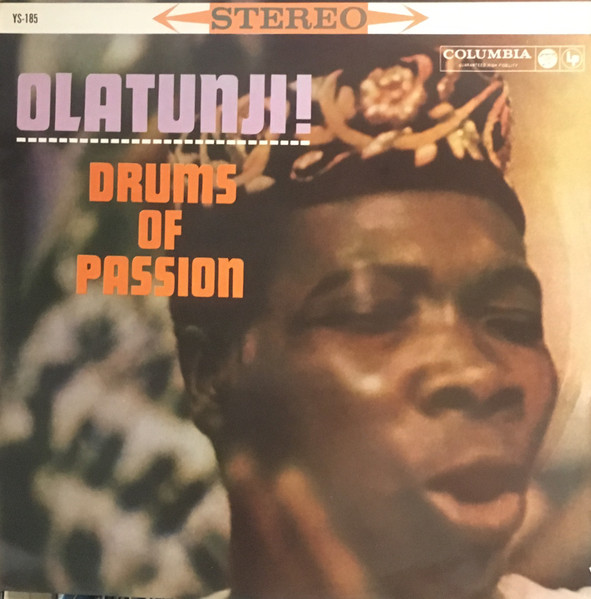 It appears that, if only subconsciously, Paul's use of the name 'Ola Na Tungee' to parse out the melody for "Eleanor Rigby" was inspired by Michael Babatunde Olatunji, a Nigerian composer and political activist whose influencial 1960 LP "Drums Of Passion" caught the attention of both manager Brian Epstein and New York disc jockey Murray the K. It's quite likely that, through either Brian Epstein or Murray the K, Paul became familiar with Michael Olatunji and considered incorporating a phonetic alteration of his last name in what eventually became "Eleanor Rigby." It appears that, if only subconsciously, Paul's use of the name 'Ola Na Tungee' to parse out the melody for "Eleanor Rigby" was inspired by Michael Babatunde Olatunji, a Nigerian composer and political activist whose influencial 1960 LP "Drums Of Passion" caught the attention of both manager Brian Epstein and New York disc jockey Murray the K. It's quite likely that, through either Brian Epstein or Murray the K, Paul became familiar with Michael Olatunji and considered incorporating a phonetic alteration of his last name in what eventually became "Eleanor Rigby."
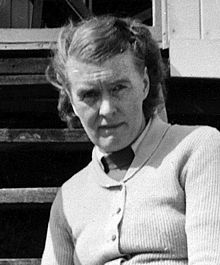 Another individual that Paul played this preliminary song to was a professional music teacher. He relates, “When I’d written ‘Eleanor Rigby,’ I tried learning with a proper bloke from the Guildhall School of Music, whom I was put on to by Jane Asher’s mum (Margaret Eliot, an oboe teacher). But I didn’t get on with him either. I went off him when I showed him ‘Eleanor Rigby’ because I thought he would be interested, and he wasn’t. I thought that he would be intrigued by the little time jumps.” Another individual that Paul played this preliminary song to was a professional music teacher. He relates, “When I’d written ‘Eleanor Rigby,’ I tried learning with a proper bloke from the Guildhall School of Music, whom I was put on to by Jane Asher’s mum (Margaret Eliot, an oboe teacher). But I didn’t get on with him either. I went off him when I showed him ‘Eleanor Rigby’ because I thought he would be interested, and he wasn’t. I thought that he would be intrigued by the little time jumps.”
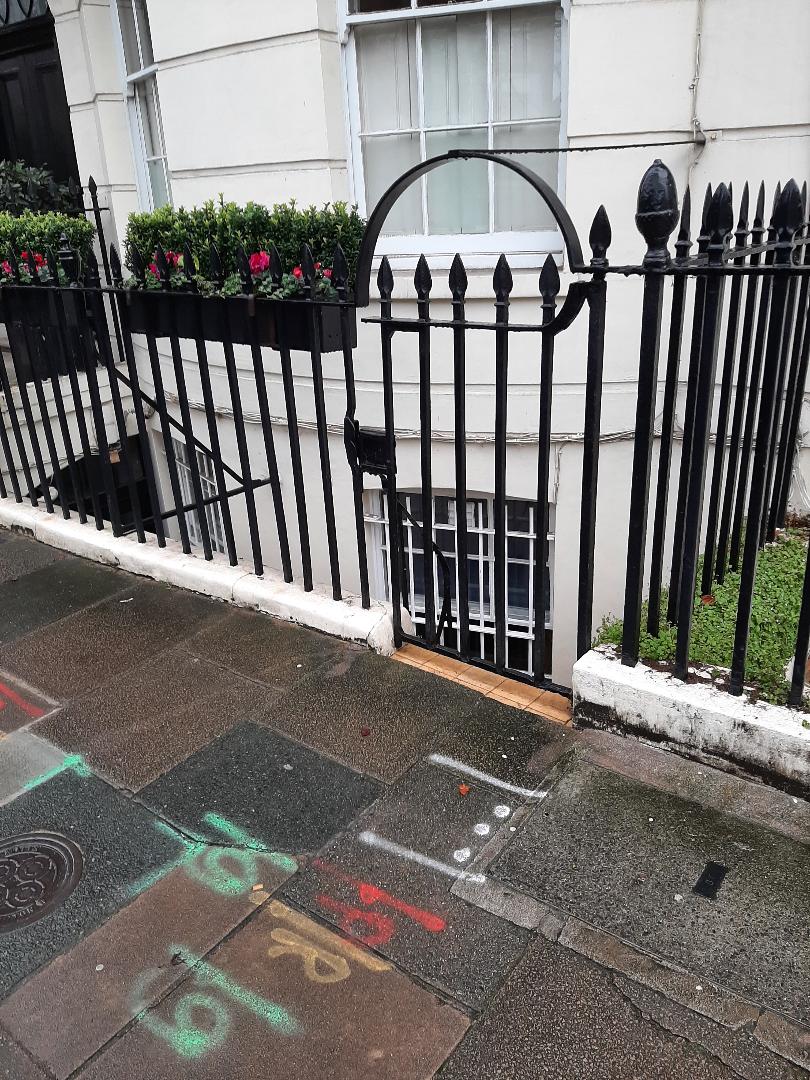 According to an official London tour guide and author Richard Porter, Paul continued working on the song at 34 Montagu Square, London, a residence owned by Ringo where McCartney had installed a studio in the basement. In Paul's book "The Lyrics," he remembers that an "early admirer of the song was William S. Burroughs who, of course, ended up on the cover of 'Sgt. Pepper.' He and I had met through the author Barry Miles and the Indica Bookshop, and he actually got to see the song take shape when I sometimes used the spoken-word studio that we had set up in the basement of Ringo's flat in Montagu Square." Regarding the name of the main character, Paul relates: “But I wasn’t comfortable with the name Miss Hawkins. I didn’t think it sounded real enough. I knew I could do better then...I wanted a really nice name that didn’t sound wrong. It had to sound like someone’s name, but different enough and wasn’t just Valerie Higgins, you know. It had to be a little more evocative...I’m always keen to get a name that sounds right. Looking at my old school photographs I remembered the names, and they all work: James Stringfellow, Grace Pendleton. Whereas when you read novels, it’s all ‘James Turnbury’ and it’s not real. So I was very keen to get a real-sounding name for that tune and the whole idea.” According to an official London tour guide and author Richard Porter, Paul continued working on the song at 34 Montagu Square, London, a residence owned by Ringo where McCartney had installed a studio in the basement. In Paul's book "The Lyrics," he remembers that an "early admirer of the song was William S. Burroughs who, of course, ended up on the cover of 'Sgt. Pepper.' He and I had met through the author Barry Miles and the Indica Bookshop, and he actually got to see the song take shape when I sometimes used the spoken-word studio that we had set up in the basement of Ringo's flat in Montagu Square." Regarding the name of the main character, Paul relates: “But I wasn’t comfortable with the name Miss Hawkins. I didn’t think it sounded real enough. I knew I could do better then...I wanted a really nice name that didn’t sound wrong. It had to sound like someone’s name, but different enough and wasn’t just Valerie Higgins, you know. It had to be a little more evocative...I’m always keen to get a name that sounds right. Looking at my old school photographs I remembered the names, and they all work: James Stringfellow, Grace Pendleton. Whereas when you read novels, it’s all ‘James Turnbury’ and it’s not real. So I was very keen to get a real-sounding name for that tune and the whole idea.”
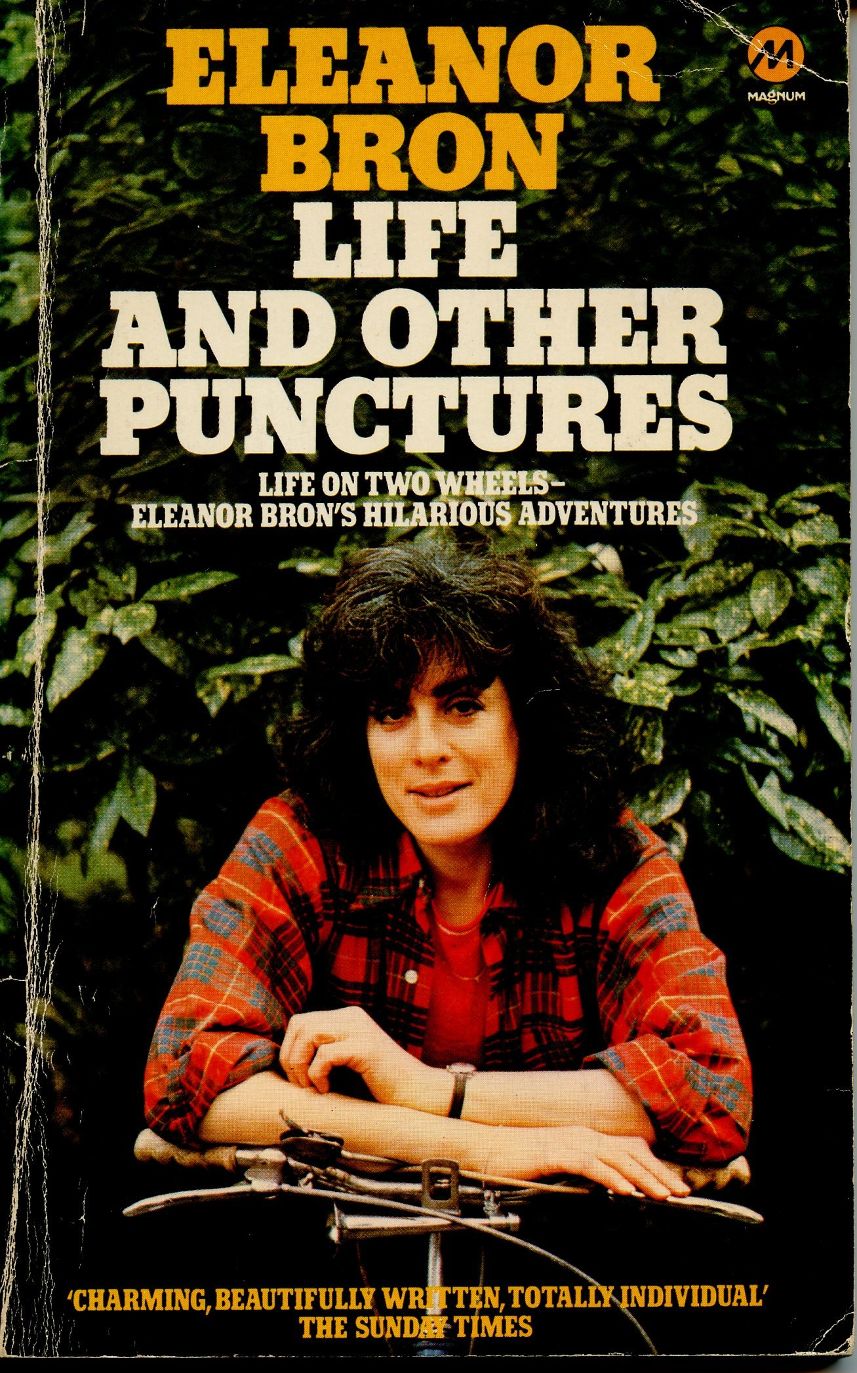 This is where the song's history begins to fragment. Regarding the character’s first name, Paul remembers, “We were working with Eleanor Bron on ‘Help!’ and I liked the name Eleanor…I’d seen her at Peter Cook’s Establishment Club in Greek Street, then she came on the film ‘Help!’ so we knew her quite well, John had a fling with her…it was the first time I’d ever been involved with that name.” This is where the song's history begins to fragment. Regarding the character’s first name, Paul remembers, “We were working with Eleanor Bron on ‘Help!’ and I liked the name Eleanor…I’d seen her at Peter Cook’s Establishment Club in Greek Street, then she came on the film ‘Help!’ so we knew her quite well, John had a fling with her…it was the first time I’d ever been involved with that name.”
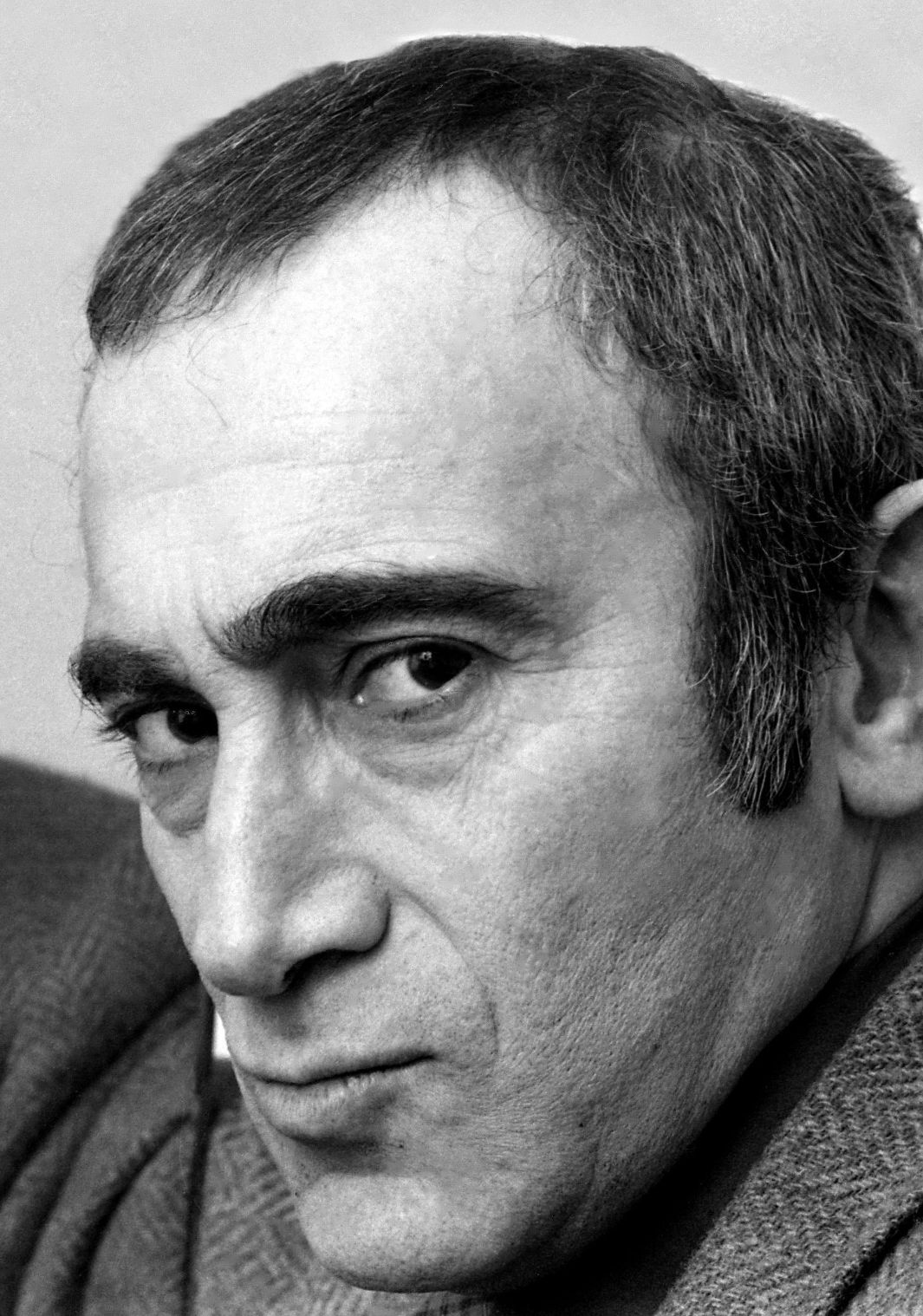 That may sound convincing enough, but it doesn’t settle the matter. Enter songwriter and friend Lionel Bart (famous for the musical “Oliver”) who recollects things differently. “Paul has always thought that he came up with the name Eleanor because of having worked with Eleanor Bron in the film ‘Help!’ but I am convinced that he took the name from a gravestone in a cemetery close to Wimbledon Common where we were both walking. The name on this gravestone was Eleanor Bygraves and Paul thought the name fitted the song. He then came back to my office and began playing it on my clavichord.” That may sound convincing enough, but it doesn’t settle the matter. Enter songwriter and friend Lionel Bart (famous for the musical “Oliver”) who recollects things differently. “Paul has always thought that he came up with the name Eleanor because of having worked with Eleanor Bron in the film ‘Help!’ but I am convinced that he took the name from a gravestone in a cemetery close to Wimbledon Common where we were both walking. The name on this gravestone was Eleanor Bygraves and Paul thought the name fitted the song. He then came back to my office and began playing it on my clavichord.”
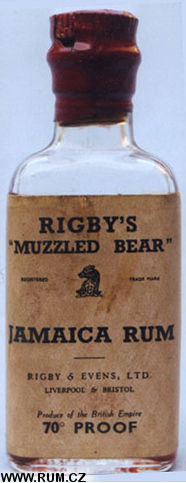 As for the last name, Paul explains, "I saw ‘Rigby’ on a shop in Bristol when I was walking around the city one evening…I remember quite distinctly having the name Eleanor, looking around for a believable surname and then wandering around the docklands in Bristol and seeing the shop there…I was in Bristol on a visit to see Jane Asher at the Old Vic (January 1966), and just walking around the dock area I saw an old shop called Rigby (actually ‘Rigby & Evens Ltd, Wine & Spirits Shippers” just across the street from the The Theatre Royale where Jane was starring in the play “The Happiest Days Of Your Life”) and I thought, oooh, It’s a very ordinary name and yet it’s a special name, it was exactly what I wanted. So Eleanor Rigby. I felt great. I’d got it! I pieced all the ideas together, got the melody and the chords." As for the last name, Paul explains, "I saw ‘Rigby’ on a shop in Bristol when I was walking around the city one evening…I remember quite distinctly having the name Eleanor, looking around for a believable surname and then wandering around the docklands in Bristol and seeing the shop there…I was in Bristol on a visit to see Jane Asher at the Old Vic (January 1966), and just walking around the dock area I saw an old shop called Rigby (actually ‘Rigby & Evens Ltd, Wine & Spirits Shippers” just across the street from the The Theatre Royale where Jane was starring in the play “The Happiest Days Of Your Life”) and I thought, oooh, It’s a very ordinary name and yet it’s a special name, it was exactly what I wanted. So Eleanor Rigby. I felt great. I’d got it! I pieced all the ideas together, got the melody and the chords."
"My mum's favorite cold cream was Nivea," Paul explains in his book "The Lyrics," "and I love it to this day. That's the cold cream I was thinking of in the description of the face Eleanor keeps 'in a jar by the door.' I was always a little scared by how often women used cold cream."
.jpg) Now for a serendipitous twist. Paul admits: “It seems that up in Woolton Cemetery, where I used to hang out a lot with John, there’s a gravestone to an Eleanor Rigby.” Sometime in the '80s this gravestone was discovered in the Woolton, Liverpool graveyard of St. Peter’s Parish Church, just a few yards away from where John and Paul had met for the first time in 1957. Now for a serendipitous twist. Paul admits: “It seems that up in Woolton Cemetery, where I used to hang out a lot with John, there’s a gravestone to an Eleanor Rigby.” Sometime in the '80s this gravestone was discovered in the Woolton, Liverpool graveyard of St. Peter’s Parish Church, just a few yards away from where John and Paul had met for the first time in 1957.
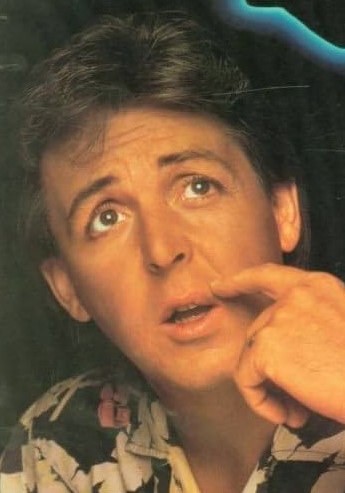 “It was either complete coincidence or in my subconscious,” McCartney continues. "I suppose it was more likely in my subconscious, because I will have been amongst those graves knocking around with John and wandering through there. It was the sort of place we used to sunbathe, and we probably had a crafty fag in the graveyard…but there could be 3000 gravestones in Britain with Eleanor Rigby on. It is possible that I saw it and subconsciously remembered it," Paul admits. "So subconscious it may be – but this is just bigger than me. I don’t know the answer to that one. Coincidence is just a word that says two things coincided. We rely on it as an explanation, but it actually just names it – it goes no further than that. But as to why they happen together, there are probably far deeper reasons that our little brains can't grasp." “It was either complete coincidence or in my subconscious,” McCartney continues. "I suppose it was more likely in my subconscious, because I will have been amongst those graves knocking around with John and wandering through there. It was the sort of place we used to sunbathe, and we probably had a crafty fag in the graveyard…but there could be 3000 gravestones in Britain with Eleanor Rigby on. It is possible that I saw it and subconsciously remembered it," Paul admits. "So subconscious it may be – but this is just bigger than me. I don’t know the answer to that one. Coincidence is just a word that says two things coincided. We rely on it as an explanation, but it actually just names it – it goes no further than that. But as to why they happen together, there are probably far deeper reasons that our little brains can't grasp."
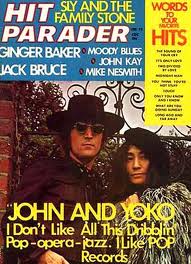 And now the question of what, if any, role did John Lennon play in writing the song. In varied interviews, he would have us think he played a vital role. When asked by Hit Parader magazine in 1972 about the song, his answer was “Both of us. I wrote a good lot of the lyrics, about 70 per cent.” In 1980 he related: “’Eleanor Rigby’ was Paul’s baby, and I helped with the education of the child.” And now the question of what, if any, role did John Lennon play in writing the song. In varied interviews, he would have us think he played a vital role. When asked by Hit Parader magazine in 1972 about the song, his answer was “Both of us. I wrote a good lot of the lyrics, about 70 per cent.” In 1980 he related: “’Eleanor Rigby’ was Paul’s baby, and I helped with the education of the child.”
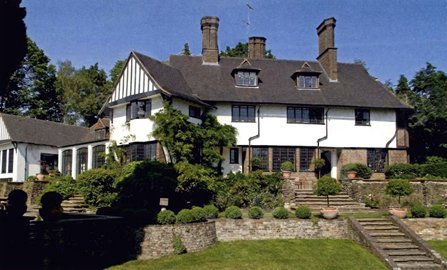 His long dissertation to Playboy magazine in 1980 about the song paints a very vivid picture. “Paul’s first verse, and the rest of the verses are basically mine. Paul had the theme, the whole bit about Eleanor Rigby in the church where a wedding had been. He knew he had this song and he needed help…part of it we worked out together: Paul didn’t have the middle – ‘ahh, look at all the lonely people.’ He and George and I were sort of sitting around the room throwing things around and I left to go to the toilet. I heard someone say that line and I turned around and said, ‘That’s it!’” What John was here describing was a writing session that Paul also described by saying “Then I took it down to John’s house in Weybridge. We sat around, laughing, got stoned and finished it off. It all sort of flowed from there.” His long dissertation to Playboy magazine in 1980 about the song paints a very vivid picture. “Paul’s first verse, and the rest of the verses are basically mine. Paul had the theme, the whole bit about Eleanor Rigby in the church where a wedding had been. He knew he had this song and he needed help…part of it we worked out together: Paul didn’t have the middle – ‘ahh, look at all the lonely people.’ He and George and I were sort of sitting around the room throwing things around and I left to go to the toilet. I heard someone say that line and I turned around and said, ‘That’s it!’” What John was here describing was a writing session that Paul also described by saying “Then I took it down to John’s house in Weybridge. We sat around, laughing, got stoned and finished it off. It all sort of flowed from there.”
 Good friend Pete Shotton, who was present on that day, recalls the details: “Most of the song was written in John’s music room at his house in Kenwood, during one of my weekend visits. The other three Beatles and their wives had come over for dinner, and after which, we all gathered around the television in Cyn’s beloved library. This particular night, John grew bored with the TV program…He said, ‘Let’s go upstairs and play a bit of music.’ Paul, George and Ringo duly followed John upstairs to a room adjoining his little recording studio. Paul, as always, had brought along his guitar, which he got out and began strumming. ‘I’ve got this little tune here,’ he said. ‘It keeps popping into me head, but I haven’t got very far with it.’ Then he sang the beginning of ‘Eleanor Rigby.’ We all sat around, making suggestions, throwing out the odd line or phrase, all of us, that is, except for the Beatle who had proposed the session in the first place. Good friend Pete Shotton, who was present on that day, recalls the details: “Most of the song was written in John’s music room at his house in Kenwood, during one of my weekend visits. The other three Beatles and their wives had come over for dinner, and after which, we all gathered around the television in Cyn’s beloved library. This particular night, John grew bored with the TV program…He said, ‘Let’s go upstairs and play a bit of music.’ Paul, George and Ringo duly followed John upstairs to a room adjoining his little recording studio. Paul, as always, had brought along his guitar, which he got out and began strumming. ‘I’ve got this little tune here,’ he said. ‘It keeps popping into me head, but I haven’t got very far with it.’ Then he sang the beginning of ‘Eleanor Rigby.’ We all sat around, making suggestions, throwing out the odd line or phrase, all of us, that is, except for the Beatle who had proposed the session in the first place.
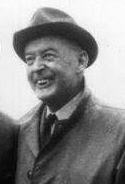 Apparently before this songwriting session, Paul had the idea for a second character for the song – a priest. “I had Father McCartney as the priest,” McCartney explains, “just because I knew that was right for the syllables, but I knew I didn’t want it even though John liked it so we opened the telephone book, went to McCartney and looked what followed it, and shortly after, it was McKenzie. I thought, Oh, that’s good...John wanted it to stay McCartney, but I said, ‘No, it’s my dad! Father McCartney.’ He said, ‘It’s good, it works fine.’ I agreed it worked, but I didn’t want to sing that, it was too loaded, it asked too many questions. I wanted it to be anonymous. John helped me on a few words but I’d put it down 80-20 to me, something like that.” Apparently before this songwriting session, Paul had the idea for a second character for the song – a priest. “I had Father McCartney as the priest,” McCartney explains, “just because I knew that was right for the syllables, but I knew I didn’t want it even though John liked it so we opened the telephone book, went to McCartney and looked what followed it, and shortly after, it was McKenzie. I thought, Oh, that’s good...John wanted it to stay McCartney, but I said, ‘No, it’s my dad! Father McCartney.’ He said, ‘It’s good, it works fine.’ I agreed it worked, but I didn’t want to sing that, it was too loaded, it asked too many questions. I wanted it to be anonymous. John helped me on a few words but I’d put it down 80-20 to me, something like that.”
 Pete Shotton adds a little more detail to the McCartney/McKenzie issue. “Then Paul got to the verse about the cleric, whose name he had down as Father McCartney. Ringo came up with the (lyric) about ‘Father McCartney darning his socks in the night,’ which everyone liked. ‘Hang on a minute, Paul,’ I said. ‘People are going to think that’s your poor old dad, left all alone in Liverpool to darn his own socks’…(Paul) laughs, ‘I never thought of that. We’d better change the name. What shall we call him then?’ I then noticed a telephone directory lying around, and said, ‘Give us that phone book. I’ll have a look through the Macs.’ One name that particularly amused us was McVicar, but it didn’t quite seem to flow with the line when Paul sang it. So I asked him to try Father McKenzie out for size, and everyone appeared to like the lilt of it." Interestingly, Beatles historian and author Robert Rodriguez, upon studying the original scribbled lyric sheet, identifies George Harrison as the writer of the song's key lyric "ah, look at all the lonely people.” Pete Shotton adds a little more detail to the McCartney/McKenzie issue. “Then Paul got to the verse about the cleric, whose name he had down as Father McCartney. Ringo came up with the (lyric) about ‘Father McCartney darning his socks in the night,’ which everyone liked. ‘Hang on a minute, Paul,’ I said. ‘People are going to think that’s your poor old dad, left all alone in Liverpool to darn his own socks’…(Paul) laughs, ‘I never thought of that. We’d better change the name. What shall we call him then?’ I then noticed a telephone directory lying around, and said, ‘Give us that phone book. I’ll have a look through the Macs.’ One name that particularly amused us was McVicar, but it didn’t quite seem to flow with the line when Paul sang it. So I asked him to try Father McKenzie out for size, and everyone appeared to like the lilt of it." Interestingly, Beatles historian and author Robert Rodriguez, upon studying the original scribbled lyric sheet, identifies George Harrison as the writer of the song's key lyric "ah, look at all the lonely people.”
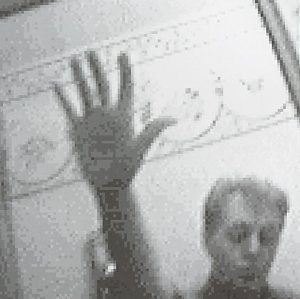 But could there have been an actual Father McKenzie? “It wasn’t written about anyone,” Paul insists. “A man appeared, who died a few years ago, who said, ‘I’m Father McKenzie.’ Anyone who was called Father McKenzie and had any slim contact with The Beatles quite naturally would think, ‘Well, I spoke to Paul and he might easily have written that about me,’ or he may have spoken to John and thought John thought it up.” But could there have been an actual Father McKenzie? “It wasn’t written about anyone,” Paul insists. “A man appeared, who died a few years ago, who said, ‘I’m Father McKenzie.’ Anyone who was called Father McKenzie and had any slim contact with The Beatles quite naturally would think, ‘Well, I spoke to Paul and he might easily have written that about me,’ or he may have spoken to John and thought John thought it up.”
 Another concern was the lyrical content of the final verse. Pete Shotton continues: “After we tinkered with a few more phrases, Paul said, ‘The real trouble is I’ve no idea how to finish this song.’ I said, ‘Why don’t you have Eleanor Rigby dying and have Father McKenzie doing the burial service for her? That way you’d have the two lonely people coming together in the end, but too late.’ John then piped in with his first comment of the entire session, ‘I don’t think you understand what we’re trying to get at, Pete.’ All I could think of to say was, ‘F**k you, John.’ Paul packed his guitar away, and we all wandered out of the room. Even after George produced a joint to lighten up the mood, I continued to feel more than a bit uptight about John’s unwarranted sarcasm. Maybe my great suggestion hadn’t been so great after all…Though John was to take credit in one of his last interviews, for most of the lyrics, my own recollection is that ‘Eleanor Rigby’ was one ‘Lennon / McCartney’ classic in which John’s composition was virtually nil.” Another concern was the lyrical content of the final verse. Pete Shotton continues: “After we tinkered with a few more phrases, Paul said, ‘The real trouble is I’ve no idea how to finish this song.’ I said, ‘Why don’t you have Eleanor Rigby dying and have Father McKenzie doing the burial service for her? That way you’d have the two lonely people coming together in the end, but too late.’ John then piped in with his first comment of the entire session, ‘I don’t think you understand what we’re trying to get at, Pete.’ All I could think of to say was, ‘F**k you, John.’ Paul packed his guitar away, and we all wandered out of the room. Even after George produced a joint to lighten up the mood, I continued to feel more than a bit uptight about John’s unwarranted sarcasm. Maybe my great suggestion hadn’t been so great after all…Though John was to take credit in one of his last interviews, for most of the lyrics, my own recollection is that ‘Eleanor Rigby’ was one ‘Lennon / McCartney’ classic in which John’s composition was virtually nil.”
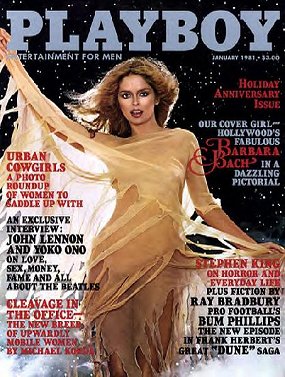 It appears by the above account that the writing of the song was complete here at John’s Kenwood home. However, one further account, that of John, appears to indicate that more writing needed to be done while in the recording studio. In his Playboy interview of 1980, he includes this interesting interchange: It appears by the above account that the writing of the song was complete here at John’s Kenwood home. However, one further account, that of John, appears to indicate that more writing needed to be done while in the recording studio. In his Playboy interview of 1980, he includes this interesting interchange:
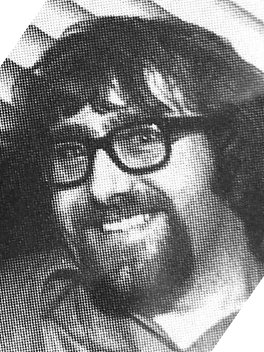 “Rather than ask me to do the lyrics, he said, ‘Hey, you guys, finish up the lyrics,’ while he sort of fiddled around with the track or the arranging or something at another part of the giant studio at EMI. I sat there with Mal Evans, a road manager who was a telephone installer, and Neil Aspinall, a student accountant who became a road manager, and it was the three of us he was talking to. I was insulted and hurt that he had thrown it out in the air that way. Actually, he meant for me to do it, but he wouldn’t ask…and, of course, there isn’t a line of theirs in the song, because I finally went off to a room with Paul and we finished the song…That was the kind of insensitivity he had, which made me upset in the later years. It’s just the kind of person he is. It meant nothing to him. I wanted to grab a piece of the song, so I wrote it with them sitting at that table, thinking, ‘How dare he throw it out in the air like that?'" “Rather than ask me to do the lyrics, he said, ‘Hey, you guys, finish up the lyrics,’ while he sort of fiddled around with the track or the arranging or something at another part of the giant studio at EMI. I sat there with Mal Evans, a road manager who was a telephone installer, and Neil Aspinall, a student accountant who became a road manager, and it was the three of us he was talking to. I was insulted and hurt that he had thrown it out in the air that way. Actually, he meant for me to do it, but he wouldn’t ask…and, of course, there isn’t a line of theirs in the song, because I finally went off to a room with Paul and we finished the song…That was the kind of insensitivity he had, which made me upset in the later years. It’s just the kind of person he is. It meant nothing to him. I wanted to grab a piece of the song, so I wrote it with them sitting at that table, thinking, ‘How dare he throw it out in the air like that?'"
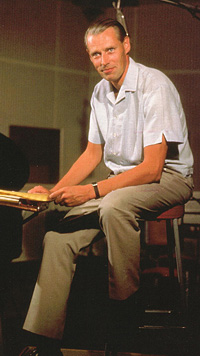 To corroborate that last minute lyric writing was done on "Eleanor Rigby" in the recording studio, producer George Martin was asked by Hit Parader magazine in 1971 if he could clear up the discrepancies about the writing of the song. “I had assumed that it was all Paul,” he replied, adding “in fact I do remember, actually at the recording, Paul was missing a few lyrics and wanting them, and going round and asking people, ‘What can we put in here?’ and Neil (Aspinal) and Mal (Evans) and I were coming up with suggestions…pretty petty, really. Everyone contributed things occasionally.” Interestingly, we can easily notice the suspicious omission of Lennon’s name in his recollection. To corroborate that last minute lyric writing was done on "Eleanor Rigby" in the recording studio, producer George Martin was asked by Hit Parader magazine in 1971 if he could clear up the discrepancies about the writing of the song. “I had assumed that it was all Paul,” he replied, adding “in fact I do remember, actually at the recording, Paul was missing a few lyrics and wanting them, and going round and asking people, ‘What can we put in here?’ and Neil (Aspinal) and Mal (Evans) and I were coming up with suggestions…pretty petty, really. Everyone contributed things occasionally.” Interestingly, we can easily notice the suspicious omission of Lennon’s name in his recollection.
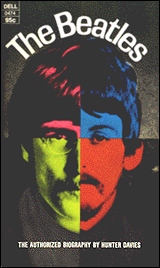 Another interesting quote is from a personal discussion Paul had with The Beatles’ official biographer Hunter Davies as printed in the 1985 edition of his book “The Beatles: The Authorized Biography.” Paul states: “I saw somewhere that he (John) says he helped on ‘Eleanor Rigby.’ Yeah, about half a line!” Paul’s book “Many Years From Now” may contain the definitive explanation, Barry Miles stating: “It seems as though John backed himself into a corner and couldn’t find a way to save face, because a less likely John Lennon composition would be hard to find.” Another interesting quote is from a personal discussion Paul had with The Beatles’ official biographer Hunter Davies as printed in the 1985 edition of his book “The Beatles: The Authorized Biography.” Paul states: “I saw somewhere that he (John) says he helped on ‘Eleanor Rigby.’ Yeah, about half a line!” Paul’s book “Many Years From Now” may contain the definitive explanation, Barry Miles stating: “It seems as though John backed himself into a corner and couldn’t find a way to save face, because a less likely John Lennon composition would be hard to find.”
Therefore, my dear Beatles fans, it’s up to you to be the judge.
Recording History
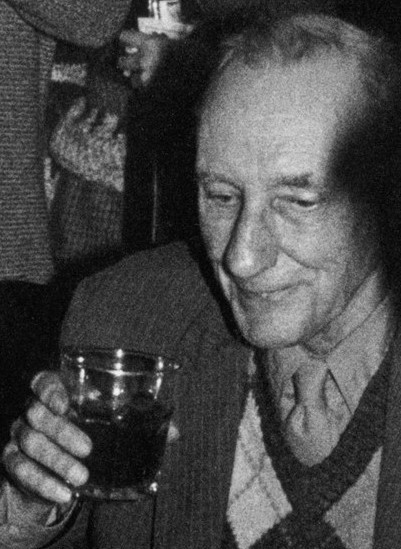 The recording history of “Eleanor Rigby” has to begin with the various demo recordings Paul personally made at his recording studio in Marylebone. American novelist William Burroughs, as explained in “Many Years From Now,” was “one of the people who heard the song in all its different stages.” “I saw him there many times,” William Burroughs recalls, “He’d just come in and work on his ‘Eleanor Rigby’…so I saw the song taking shape…I could see he knew what he was doing.” The recording history of “Eleanor Rigby” has to begin with the various demo recordings Paul personally made at his recording studio in Marylebone. American novelist William Burroughs, as explained in “Many Years From Now,” was “one of the people who heard the song in all its different stages.” “I saw him there many times,” William Burroughs recalls, “He’d just come in and work on his ‘Eleanor Rigby’…so I saw the song taking shape…I could see he knew what he was doing.”
 Before proper recording of the song began at EMI Studios, however, a decision needed to be made as to its arrangement. As related by engineer Geoff Emerick in his 2006 book “Here, There And Everywhere,” the song was personally debuted to George Martin by Paul at an undisclosed date in the studio. “After hearing Paul play this beautiful song on acoustic guitar, George Martin felt that the only accompaniment that was necessary was that of a double string quartet: four violins, two violas, and two cellos. Paul wasn’t immediately enamored of the concept – he was afraid of it sounding too cloying, too “Mancini” – but George eventually talked him into it, assuring him he would write a string arrangement that would be suitable. 'Okay, but I want the strings to sound really biting,' Paul warned as he signed off on the idea.” Before proper recording of the song began at EMI Studios, however, a decision needed to be made as to its arrangement. As related by engineer Geoff Emerick in his 2006 book “Here, There And Everywhere,” the song was personally debuted to George Martin by Paul at an undisclosed date in the studio. “After hearing Paul play this beautiful song on acoustic guitar, George Martin felt that the only accompaniment that was necessary was that of a double string quartet: four violins, two violas, and two cellos. Paul wasn’t immediately enamored of the concept – he was afraid of it sounding too cloying, too “Mancini” – but George eventually talked him into it, assuring him he would write a string arrangement that would be suitable. 'Okay, but I want the strings to sound really biting,' Paul warned as he signed off on the idea.”
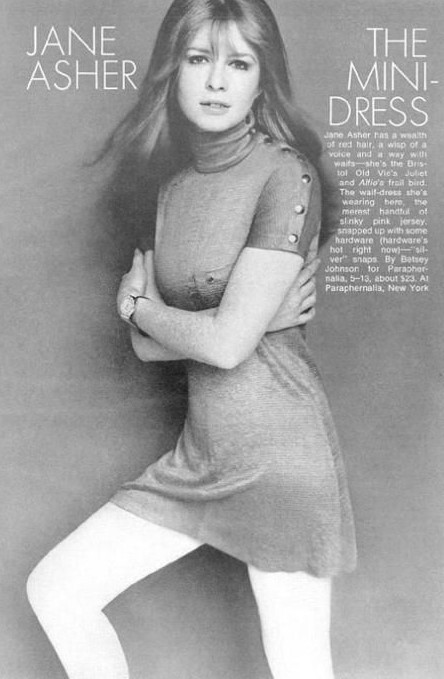 To throw another monkey wrench into the story, both John and Paul are on record as saying that it was Paul’s original concept to use strings on the song. “The violin backing was Paul’s idea,” John insists, “Jane Asher had turned him on to Vivaldi and it was very good. The violins were straight out of Vivaldi. I can’t take any credit for that, at all.” As acknowedged in the book accompanying the 2022 Deluxe editions of "Revolver," "The rhythmic drive of 'Eleanor Rigby' is reminiscent of 'Winter: 1. Allegro non molto' from Vivaldi's 'Four Seasons.'" Paul humbly states: “I thought of the backing but it was George Martin who finished it off. I just go bash, bash on the piano. He knows what I mean.” To throw another monkey wrench into the story, both John and Paul are on record as saying that it was Paul’s original concept to use strings on the song. “The violin backing was Paul’s idea,” John insists, “Jane Asher had turned him on to Vivaldi and it was very good. The violins were straight out of Vivaldi. I can’t take any credit for that, at all.” As acknowedged in the book accompanying the 2022 Deluxe editions of "Revolver," "The rhythmic drive of 'Eleanor Rigby' is reminiscent of 'Winter: 1. Allegro non molto' from Vivaldi's 'Four Seasons.'" Paul humbly states: “I thought of the backing but it was George Martin who finished it off. I just go bash, bash on the piano. He knows what I mean.”
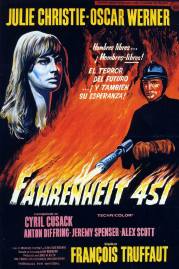 At any rate, shortly after George Martin was introduced to the song, he and Paul convened at Martin’s home to work out the arrangement, similarly to what they had done with the previous year's “Yesterday.” “Paul came round to my flat one day and he played the piano and I played the piano and I took a note of his music,” George Martin recalls, "I was very much inspired by Bernard Herrmann, in particular a (movie) score he did for the Truffaut film ‘Fahrenheit 451.’ That really impressed me, especially the strident string writing. When Paul told me he wanted the strings in ‘Eleanor Rigby’ to be doing a rhythm it was Herrmann’s score which was a particular influence." At any rate, shortly after George Martin was introduced to the song, he and Paul convened at Martin’s home to work out the arrangement, similarly to what they had done with the previous year's “Yesterday.” “Paul came round to my flat one day and he played the piano and I played the piano and I took a note of his music,” George Martin recalls, "I was very much inspired by Bernard Herrmann, in particular a (movie) score he did for the Truffaut film ‘Fahrenheit 451.’ That really impressed me, especially the strident string writing. When Paul told me he wanted the strings in ‘Eleanor Rigby’ to be doing a rhythm it was Herrmann’s score which was a particular influence."
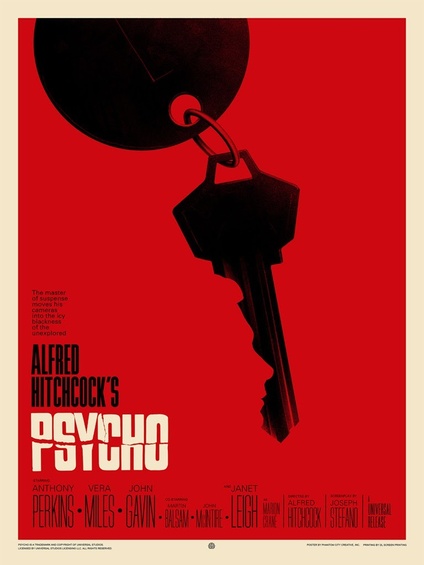 In his book "The Lyrics," McCartney elaborates further: "When I took the song to George (Martin), I said that, for accompaniment, I wanted a series of E minor chord stabs. In fact, the whole song is really only two chords: C major and E minor. In George's version of things, he conflates my idea of the stabs and his own inspiration by Bernard Herrmann, who had written the music for the movie 'Psycho.' George (Martin) wanted to bring some of that drama into the arrangement. And, of course, there's some kind of madcap connection between Eleanor Rigby, an elderly woman left high and dry, and the mummified mother in 'Psycho.'" George Martin adds, "I did notice in particular that the strings he wrote (for 'Psycho') were the very opposite of syrupy. They were jagged, spiky, very menacing. That kind of short attack that you get on his strings was very usueful on 'Eleanor Rigby.' It had to be very marcato; it had to be an absolutely tight rhythm, which strings aren't noted for." In his book "The Lyrics," McCartney elaborates further: "When I took the song to George (Martin), I said that, for accompaniment, I wanted a series of E minor chord stabs. In fact, the whole song is really only two chords: C major and E minor. In George's version of things, he conflates my idea of the stabs and his own inspiration by Bernard Herrmann, who had written the music for the movie 'Psycho.' George (Martin) wanted to bring some of that drama into the arrangement. And, of course, there's some kind of madcap connection between Eleanor Rigby, an elderly woman left high and dry, and the mummified mother in 'Psycho.'" George Martin adds, "I did notice in particular that the strings he wrote (for 'Psycho') were the very opposite of syrupy. They were jagged, spiky, very menacing. That kind of short attack that you get on his strings was very usueful on 'Eleanor Rigby.' It had to be very marcato; it had to be an absolutely tight rhythm, which strings aren't noted for."
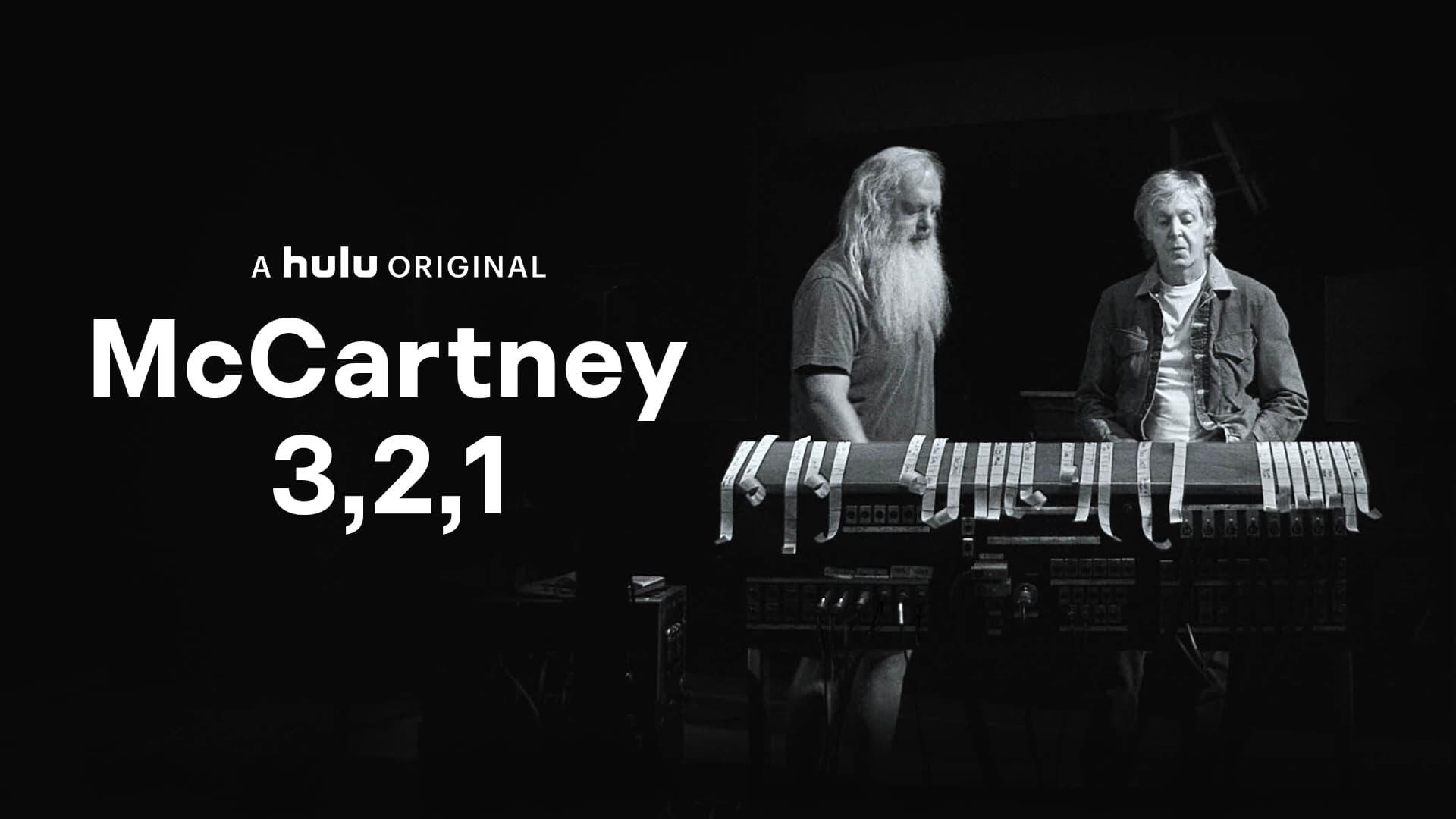 In Paul's 2021 Hulu series "McCartney 3,2,1," he remembers the events of his introducing the song to his producer. "I remember showing this to George Martin. We'd already done 'Yesterday,' so this was like, 'I think this song can suit (strings).' But instead of a quartet, it was now (expanded to) an octet just to do something a bit different. And I brought it in like...(demonstrates on piano)...and then George would show me. He said, 'Well, ok, that's sort of rock 'n' roll, it's all pretty much in one octave.' He would then say, 'Ok, so the cello would go there and then the viola would go there and then...' So he would seperate all of the notes and that's the fabulous orchestration that he did." Regarding the absence of piano on the recording, Paul continued: "That was the thing because, y'know, 'Yesterday' had just been the one guitar, so we decided we'd kind of try and go a little bit further and just have this and then I would sing to this, y'know. So I'd showed George (Martin) the chords, he would then transpose it." In Paul's 2021 Hulu series "McCartney 3,2,1," he remembers the events of his introducing the song to his producer. "I remember showing this to George Martin. We'd already done 'Yesterday,' so this was like, 'I think this song can suit (strings).' But instead of a quartet, it was now (expanded to) an octet just to do something a bit different. And I brought it in like...(demonstrates on piano)...and then George would show me. He said, 'Well, ok, that's sort of rock 'n' roll, it's all pretty much in one octave.' He would then say, 'Ok, so the cello would go there and then the viola would go there and then...' So he would seperate all of the notes and that's the fabulous orchestration that he did." Regarding the absence of piano on the recording, Paul continued: "That was the thing because, y'know, 'Yesterday' had just been the one guitar, so we decided we'd kind of try and go a little bit further and just have this and then I would sing to this, y'know. So I'd showed George (Martin) the chords, he would then transpose it."
 With the arrangement then decided and a George Martin-written score completed, April 28th, 1966 was the date chosen to record the instrumentation for the song. The eight classical musicians that made up the “octet,” along with Paul, John and the EMI production team of George Martin, Geoff Emerick and Phil McDonald, entered EMI Studio Two at 5 pm for what only took a little less than three hours to perfect. Paul and John mostly stayed up in the control room while George Martin conducted the musicians in the studio. "George (Martin) would talk to the musicians," Paul explained in his "McCartney 3,2,1" Hulu series, describing the producer's instructions as "'dunk, dunk, dunk, I really want it bam, bam, bam, quite bright, staccato, chunk, chunk, chunk.' And they got into it. He loved it. It was a nice little arrangement on its own." With the arrangement then decided and a George Martin-written score completed, April 28th, 1966 was the date chosen to record the instrumentation for the song. The eight classical musicians that made up the “octet,” along with Paul, John and the EMI production team of George Martin, Geoff Emerick and Phil McDonald, entered EMI Studio Two at 5 pm for what only took a little less than three hours to perfect. Paul and John mostly stayed up in the control room while George Martin conducted the musicians in the studio. "George (Martin) would talk to the musicians," Paul explained in his "McCartney 3,2,1" Hulu series, describing the producer's instructions as "'dunk, dunk, dunk, I really want it bam, bam, bam, quite bright, staccato, chunk, chunk, chunk.' And they got into it. He loved it. It was a nice little arrangement on its own."
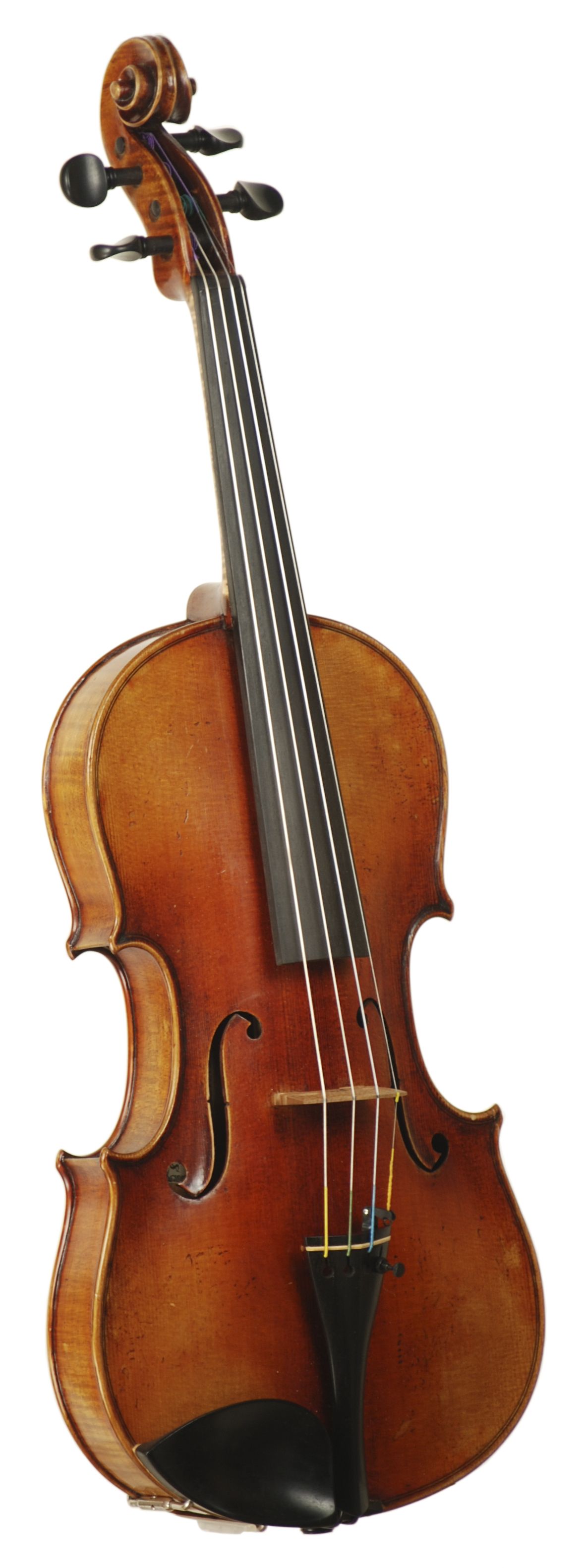 Following Paul’s instructions to have the strings sound “biting,” Geoff Emerick "took note of what he said and began thinking how to accomplish that…String quartets were traditionally recorded with just one or two microphones, placed high, several feet up in the air so that the sound of the bows scraping couldn’t be heard. But with McCartney’s directive in mind, I decided to close-mic the instruments, which was a new concept. The (string) musicians were horrified! One of them gave me a look of disdain, rolled his eyes to the ceiling, and said under his breath, ‘You can’t do that, you know.’ His words shook my confidence and made me start to second-guess myself. But I carried on regardless, determined to at least hear what it sounded like." Following Paul’s instructions to have the strings sound “biting,” Geoff Emerick "took note of what he said and began thinking how to accomplish that…String quartets were traditionally recorded with just one or two microphones, placed high, several feet up in the air so that the sound of the bows scraping couldn’t be heard. But with McCartney’s directive in mind, I decided to close-mic the instruments, which was a new concept. The (string) musicians were horrified! One of them gave me a look of disdain, rolled his eyes to the ceiling, and said under his breath, ‘You can’t do that, you know.’ His words shook my confidence and made me start to second-guess myself. But I carried on regardless, determined to at least hear what it sounded like."
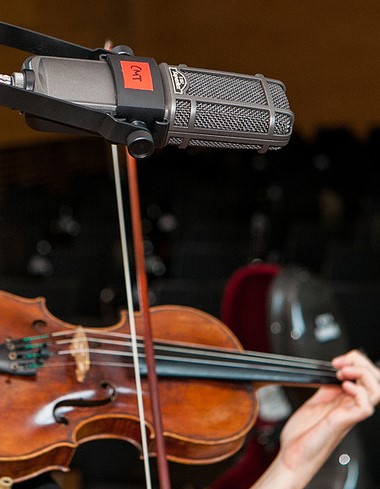 "We did one take with the mics fairly close, then on the next take I decided to get extreme and move the mics in really close – perhaps just an inch or so away from each instrument. It was a fine line: I didn’t want to make the musicians so uncomfortable that they couldn’t give their best performance, but my job was to achieve what Paul wanted. That was the sound he liked, and so that was the miking we used, despite the string players’ unhappiness. To some degree, I could understand why they were so upset: they were scared of playing a bum note, and being under a microscope like that meant that any discrepancy in their playing was going to be magnified. Also, the technical limitations at the time were such that we couldn’t easily drop in, so they had to play the whole song correctly from beginning to end every time.” "We did one take with the mics fairly close, then on the next take I decided to get extreme and move the mics in really close – perhaps just an inch or so away from each instrument. It was a fine line: I didn’t want to make the musicians so uncomfortable that they couldn’t give their best performance, but my job was to achieve what Paul wanted. That was the sound he liked, and so that was the miking we used, despite the string players’ unhappiness. To some degree, I could understand why they were so upset: they were scared of playing a bum note, and being under a microscope like that meant that any discrepancy in their playing was going to be magnified. Also, the technical limitations at the time were such that we couldn’t easily drop in, so they had to play the whole song correctly from beginning to end every time.”
 “Even without peering through the control room glass, I could hear the sound of the eight musicians sliding their chairs back before every take, so I had to keep going down there and moving the mics back in closer after every take: it was comic, really. Finally, George Martin told them pointedly to stop moving off mic.” “Even without peering through the control room glass, I could hear the sound of the eight musicians sliding their chairs back before every take, so I had to keep going down there and moving the mics back in closer after every take: it was comic, really. Finally, George Martin told them pointedly to stop moving off mic.”
 Fourteen takes of the song were recorded (ten of them being complete), these being captured on two reels of four-track tape. Tracks one and two of the tape contained two violins each, while track three contained two cellos and track four contained two violas. In between takes one and two, a request came from McCartney, who was in the control room while George Martin was conducting the musicians in the studio. According to Mark Lewisohn’s account in “The Beatles Recording Sessions,” George Martin attempted to placate Paul's previous request for the musicians to play without vibrato as he formerly insisted for “Yesterday,” this resulting in what Mark Lewisohn describes as "an amusing incident. Fourteen takes of the song were recorded (ten of them being complete), these being captured on two reels of four-track tape. Tracks one and two of the tape contained two violins each, while track three contained two cellos and track four contained two violas. In between takes one and two, a request came from McCartney, who was in the control room while George Martin was conducting the musicians in the studio. According to Mark Lewisohn’s account in “The Beatles Recording Sessions,” George Martin attempted to placate Paul's previous request for the musicians to play without vibrato as he formerly insisted for “Yesterday,” this resulting in what Mark Lewisohn describes as "an amusing incident.
 Between takes one and two, George Martin asked the players if they could play without vibrato. They tried two quick versions, one with, one without – not classified as takes – and at the end George Martin called up to Paul McCartney, ‘Can you hear the difference?’ – ‘Er…not much!’ Ironically, the musicians could and they favored playing without, which must have pleased Paul." This recoring, which was labeled 'Talking (Keep)" on the tape box, is included in the 2022 Deluxe editions of "Revolver." This recording also reveals that the musicians acknowledged that is was "very difficult not to play with vibrato" and grumble good-naturedly, "all those years of learning and he says it sounds the same!" George Martin thereafter requested them to "Keep the vibrato fairly narrow, not too wide a vibrato." Between takes one and two, George Martin asked the players if they could play without vibrato. They tried two quick versions, one with, one without – not classified as takes – and at the end George Martin called up to Paul McCartney, ‘Can you hear the difference?’ – ‘Er…not much!’ Ironically, the musicians could and they favored playing without, which must have pleased Paul." This recoring, which was labeled 'Talking (Keep)" on the tape box, is included in the 2022 Deluxe editions of "Revolver." This recording also reveals that the musicians acknowledged that is was "very difficult not to play with vibrato" and grumble good-naturedly, "all those years of learning and he says it sounds the same!" George Martin thereafter requested them to "Keep the vibrato fairly narrow, not too wide a vibrato."
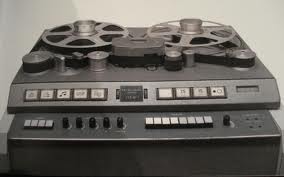 "Take 14" was deemed the best, George Martin asking the musicians to "play with more sort of vigor and confidence" before "take five" and to play with more "short attack" as the recording session progressed (as witnessed on "take two" as later included in the Deluxe editions of "Revolver"). "Take 14" was then mixed down at the close of the session onto track one of another four-track tape, to allow three available open tracks for the vocal overdubs to be done at the next recording session. "Take 14" was deemed the best, George Martin asking the musicians to "play with more sort of vigor and confidence" before "take five" and to play with more "short attack" as the recording session progressed (as witnessed on "take two" as later included in the Deluxe editions of "Revolver"). "Take 14" was then mixed down at the close of the session onto track one of another four-track tape, to allow three available open tracks for the vocal overdubs to be done at the next recording session.
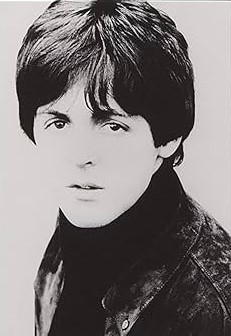 "I was very excited actually," Paul remembers in "McCartney 3,2,1" about his witnessing the performance of the octet. "Downstairs at Abbey Road, the eight guys assembled and they did it live...I would go down and say 'hi' and listen to it down there, which is always nice at first. They you go up and see what the engineers are making of it. Y'know, they'd put it all together, put the right little bits of fairy dust on it and they now made it like a record!". "I was very excited actually," Paul remembers in "McCartney 3,2,1" about his witnessing the performance of the octet. "Downstairs at Abbey Road, the eight guys assembled and they did it live...I would go down and say 'hi' and listen to it down there, which is always nice at first. They you go up and see what the engineers are making of it. Y'know, they'd put it all together, put the right little bits of fairy dust on it and they now made it like a record!".
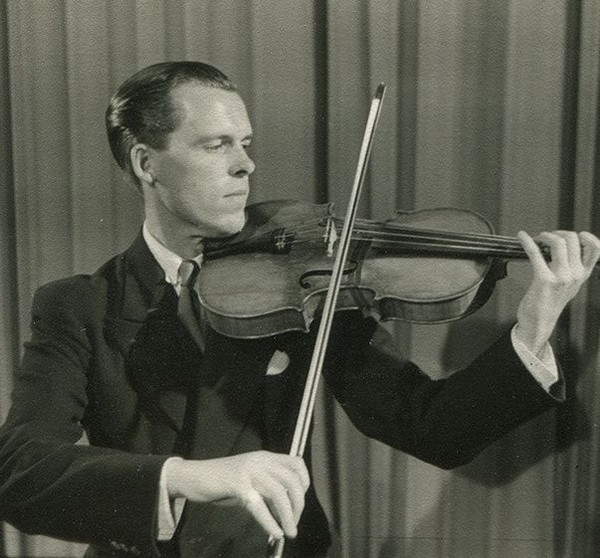 One of the viola players, Stephen Shingles, remembers about that session: “I got about five pounds (the standard Musicians’ Union session fee was nine pounds) and it made billions of pounds. And like idiots we gave them all our ideas for free.” Being that they were going strictly off of George Martin’s pre-written score, it can easily be assumed that their “ideas” had to be minimal. One of the viola players, Stephen Shingles, remembers about that session: “I got about five pounds (the standard Musicians’ Union session fee was nine pounds) and it made billions of pounds. And like idiots we gave them all our ideas for free.” Being that they were going strictly off of George Martin’s pre-written score, it can easily be assumed that their “ideas” had to be minimal.
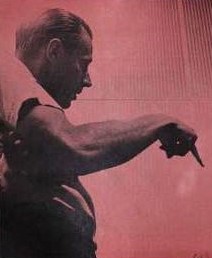 Geoff Emerick concludes: “In the end, the players did a good job, though they clearly were annoyed, so much so that they declined an invitation to listen to the playback. We didn’t really care what they thought, anyway – we were pleased that we had come up with another new sound, which was really a combination of Paul’s vision and mine.” Upon listening to this "Talking (Keep)" selection made available in the Deluxe editions of "Revolver," however, the listener can hear these studio musicians laughing and discussing their performances with George Martin, thus suggesting that maybe they weren't too "annoyed" as Geoff Emerick remembered. By 7:50 that evening, the session concluded for the day. Geoff Emerick concludes: “In the end, the players did a good job, though they clearly were annoyed, so much so that they declined an invitation to listen to the playback. We didn’t really care what they thought, anyway – we were pleased that we had come up with another new sound, which was really a combination of Paul’s vision and mine.” Upon listening to this "Talking (Keep)" selection made available in the Deluxe editions of "Revolver," however, the listener can hear these studio musicians laughing and discussing their performances with George Martin, thus suggesting that maybe they weren't too "annoyed" as Geoff Emerick remembered. By 7:50 that evening, the session concluded for the day.
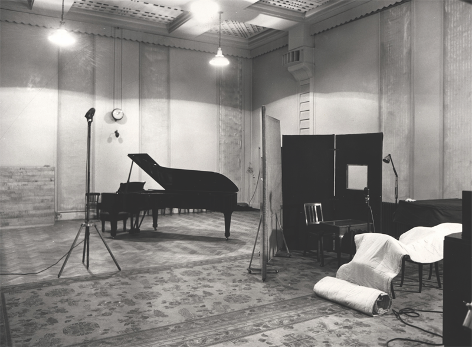 At 5 pm the next evening, April 29th, 1966, another session took place at EMI Studios, this time in EMI Studio Three, to add the vocals to “Eleanor Rigby.” McCartney’s lead vocals were added to track four, John and George's harmony vocals during the intro and bridge added to track three, and an attempt at Paul double-tracking his lead vocal on track two. However, as caught on track two of the tape, Paul was unhappy with his double-tracking, stating, "It's crap, this one!" "I didn't think I was singing it well," Paul states in "McCartney 3,2,1." "I remember talking to George (Martin). I said, 'I'm not singing this (well)' He said, 'No, it's ok.' He was calming me down. And we double-tracked it, I think probably because I didn't think I'd sung it well. So when we would double-track it, we'd cover any sins." In the end, track two of this tape was not used, ADT ("Artificial Double Tracking") being applied to his lead vocal from track four during the final mixing stage. The song was considered complete by 1 am the next morning. Three mono mixes of the song were then produced by George Martin, Geoff Emerick and Phil McDonald, although neither of these were ever used. At 5 pm the next evening, April 29th, 1966, another session took place at EMI Studios, this time in EMI Studio Three, to add the vocals to “Eleanor Rigby.” McCartney’s lead vocals were added to track four, John and George's harmony vocals during the intro and bridge added to track three, and an attempt at Paul double-tracking his lead vocal on track two. However, as caught on track two of the tape, Paul was unhappy with his double-tracking, stating, "It's crap, this one!" "I didn't think I was singing it well," Paul states in "McCartney 3,2,1." "I remember talking to George (Martin). I said, 'I'm not singing this (well)' He said, 'No, it's ok.' He was calming me down. And we double-tracked it, I think probably because I didn't think I'd sung it well. So when we would double-track it, we'd cover any sins." In the end, track two of this tape was not used, ADT ("Artificial Double Tracking") being applied to his lead vocal from track four during the final mixing stage. The song was considered complete by 1 am the next morning. Three mono mixes of the song were then produced by George Martin, Geoff Emerick and Phil McDonald, although neither of these were ever used.
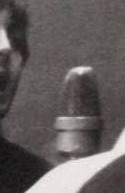 The reason they were never used was that, on June 6th, 1966, an idea to include an additional vocal passage in the conclusion of the song was recorded, making the previous mono mixes unusable. After assorted tape copying and mono mixing of recently recorded “Revolver” tracks were completed, Paul stuck around EMI Studio Three so that, at midnight, he could have a go at adding two vocal lines (“aah, look at all the lonely people”) to be superimposed on top of his previously recorded vocals in the conclusion of the song. By 1:30 the next morning, this was complete and so was “Eleanor Rigby.” The reason they were never used was that, on June 6th, 1966, an idea to include an additional vocal passage in the conclusion of the song was recorded, making the previous mono mixes unusable. After assorted tape copying and mono mixing of recently recorded “Revolver” tracks were completed, Paul stuck around EMI Studio Three so that, at midnight, he could have a go at adding two vocal lines (“aah, look at all the lonely people”) to be superimposed on top of his previously recorded vocals in the conclusion of the song. By 1:30 the next morning, this was complete and so was “Eleanor Rigby.”
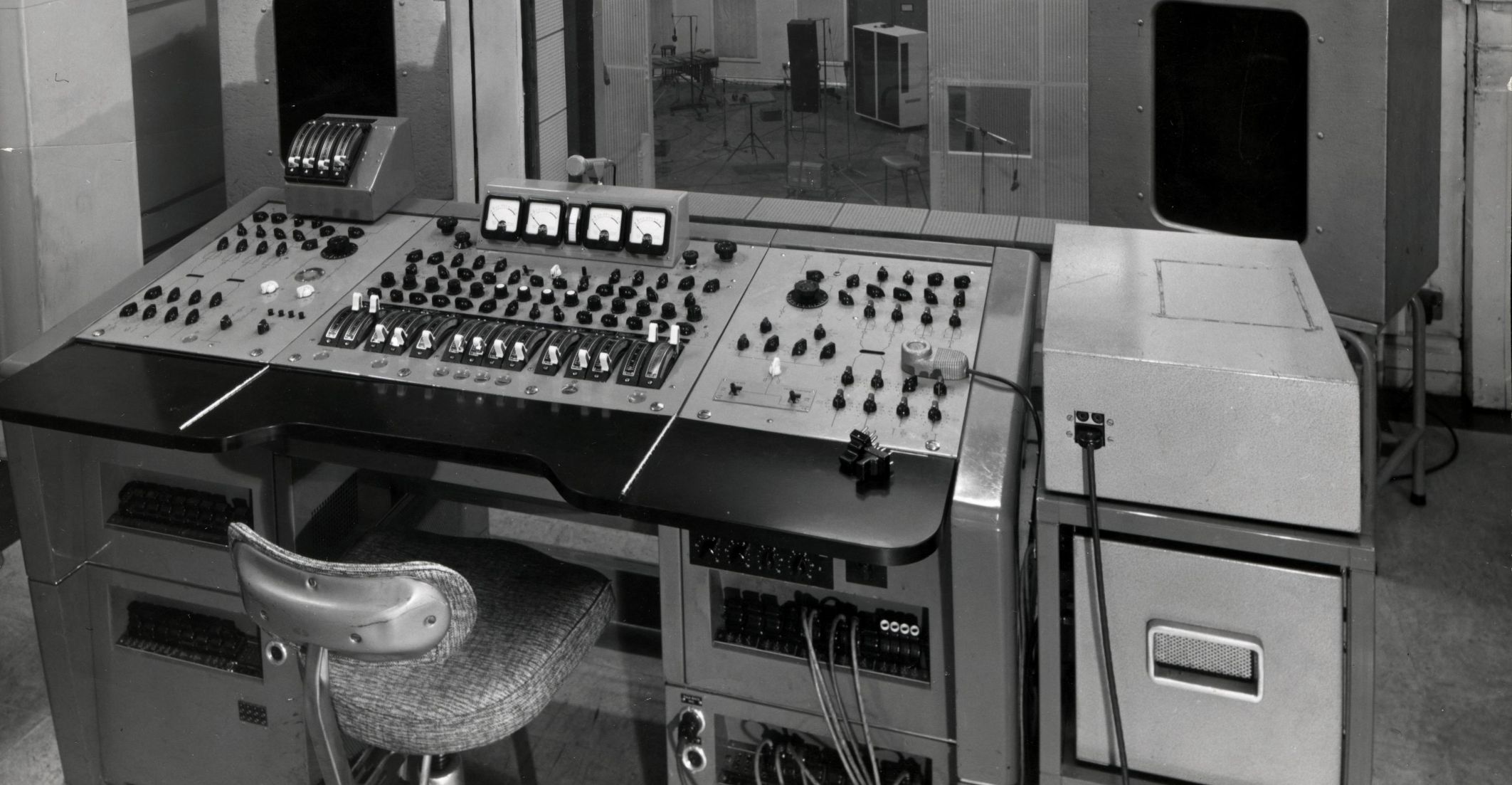 Both of the released mono and stereo mixes of the hit song "Eleanor Rigby" were created during the final mixing session for the “Revolver” album on June 22nd, 1966. This was done in the control room of EMI Studio Three by George Martin and engineers Geoff Emerick and Jerry Boys. Paul's lead vocals in the mono mix are somewhat louder than the stereo. The stereo mix has the double string quartet centered while Paul’s lead vocals are entirely in the right channel when they are single tracked with the ADT track of his lead vocals centered in the mix during the choruses. A blatant error with the ADT occurs at the beginning of the first verse where the first two syllables of the word “Eleanor” are centered before they turn the ADT track down for the rest of the verse. The background harmonies and Paul’s final vocal overdub in the conclusion are all heard entirely in the left channel. Both of the released mono and stereo mixes of the hit song "Eleanor Rigby" were created during the final mixing session for the “Revolver” album on June 22nd, 1966. This was done in the control room of EMI Studio Three by George Martin and engineers Geoff Emerick and Jerry Boys. Paul's lead vocals in the mono mix are somewhat louder than the stereo. The stereo mix has the double string quartet centered while Paul’s lead vocals are entirely in the right channel when they are single tracked with the ADT track of his lead vocals centered in the mix during the choruses. A blatant error with the ADT occurs at the beginning of the first verse where the first two syllables of the word “Eleanor” are centered before they turn the ADT track down for the rest of the verse. The background harmonies and Paul’s final vocal overdub in the conclusion are all heard entirely in the left channel.
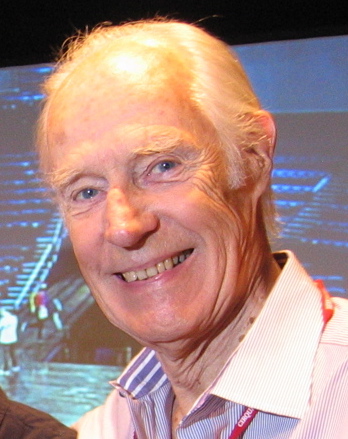 An instrumental stereo mix of "take 14" from the first four-track tape was made in 1995 by George Martin and Geoff Emerick for inclusion on the “Anthology 2” album, the strings being remixed for a good stereo presence. An instrumental stereo mix of "take 14" from the first four-track tape was made in 1995 by George Martin and Geoff Emerick for inclusion on the “Anthology 2” album, the strings being remixed for a good stereo presence.
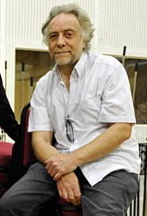 An entirely new stereo mix of the song was made in 1999 for its inclusion on the release “Yellow Submarine Songtrack.” This mix was performed in Abbey Road Studios (formerly EMI Studios) by the team of Peter Cobbin, Paul Hicks, Mirek Stiles and Allan Rouse. The string section was divided into the violins on the left channel and the violas and cellos on the right channel. All of the vocals were centered in the mix. An entirely new stereo mix of the song was made in 1999 for its inclusion on the release “Yellow Submarine Songtrack.” This mix was performed in Abbey Road Studios (formerly EMI Studios) by the team of Peter Cobbin, Paul Hicks, Mirek Stiles and Allan Rouse. The string section was divided into the violins on the left channel and the violas and cellos on the right channel. All of the vocals were centered in the mix.
 Sometime between 2004 and 2006, George Martin and son Giles Martin created yet another stereo mix of “Eleanor Rigby” (with a transition from the song “Julia”) for the Cirque du Soleil soundtrack entitled “Love.” This mix combined the instrumental version with vocals for an extended presentation of the song. Sometime between 2004 and 2006, George Martin and son Giles Martin created yet another stereo mix of “Eleanor Rigby” (with a transition from the song “Julia”) for the Cirque du Soleil soundtrack entitled “Love.” This mix combined the instrumental version with vocals for an extended presentation of the song.
 In 2015, Giles Martin once again turned his attention to the master tapes for "Eleanor Rigby" at Abbey Road Studios to create, along with Sam Okell, an even more vibrant stereo mix of the song for inclusion in the re-released 2015 version of the compilation album "Beatles 1." Giles Martin and Sam Okell returned to "Eleanor Rigby" yet again to create yet another stereo mix of the song sometime in 2022 for inclusion in the "Revolver" editions released that year. While they were at it, they also mixed the above-mentioned "Talking (Keep)" recording between "take one" and "take two" from the original session, as well as the complete instrumental "take two" for inclusion in the Deluxe editions. In 2015, Giles Martin once again turned his attention to the master tapes for "Eleanor Rigby" at Abbey Road Studios to create, along with Sam Okell, an even more vibrant stereo mix of the song for inclusion in the re-released 2015 version of the compilation album "Beatles 1." Giles Martin and Sam Okell returned to "Eleanor Rigby" yet again to create yet another stereo mix of the song sometime in 2022 for inclusion in the "Revolver" editions released that year. While they were at it, they also mixed the above-mentioned "Talking (Keep)" recording between "take one" and "take two" from the original session, as well as the complete instrumental "take two" for inclusion in the Deluxe editions.
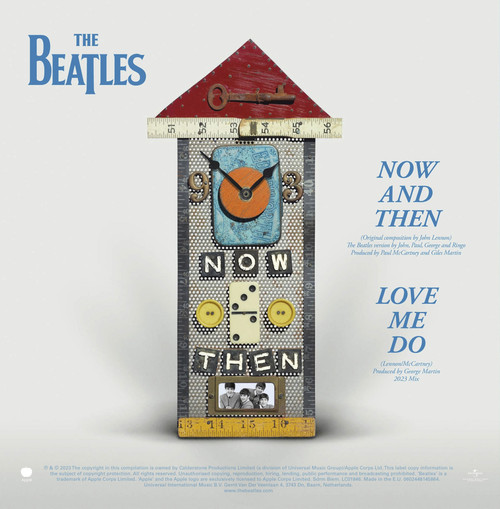 Giles Martin was also involved, along with Paul, in inserting a bit of the backing harmonies used in the original sessions of "Eleanor Rigby" into the final Beatles release "Now And Then," this occuring sometime in the later half of 2023. The insertion of these harmonies was accomplished at Abbey Road Studios by Giles Martin using the same methods he utilized in making the "Love" album detailed above, "Now And Then" being produced by Paul McCartney and Giles Martin (with Jeff Lynne as additional producer because of his work with the song in 1995) and mixed by Spike Stent. Giles Martin was also involved, along with Paul, in inserting a bit of the backing harmonies used in the original sessions of "Eleanor Rigby" into the final Beatles release "Now And Then," this occuring sometime in the later half of 2023. The insertion of these harmonies was accomplished at Abbey Road Studios by Giles Martin using the same methods he utilized in making the "Love" album detailed above, "Now And Then" being produced by Paul McCartney and Giles Martin (with Jeff Lynne as additional producer because of his work with the song in 1995) and mixed by Spike Stent.
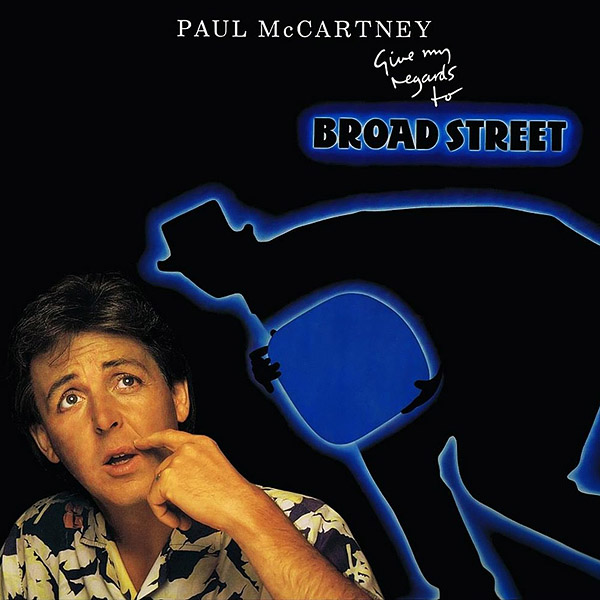 Also to be mentioned is a new recording of the song by Paul McCartney in 1983 for inclusion on his soundtrack album “Give My Regards To Broad Street,” this being recorded at Abbey Road Studios in 1983 with George Martin as producer. On the album, this recording quickly segues into a similarly titled instrumental composition called “Eleanor’s Dream.” Also to be mentioned is a new recording of the song by Paul McCartney in 1983 for inclusion on his soundtrack album “Give My Regards To Broad Street,” this being recorded at Abbey Road Studios in 1983 with George Martin as producer. On the album, this recording quickly segues into a similarly titled instrumental composition called “Eleanor’s Dream.”
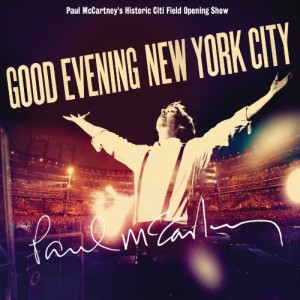 On February 8th, 1990, a live version of “Eleanor Rigby” was recorded by McCartney which was included on his “Tripping The Live Fantastic” and “Tripping The Live Fantastic: Highlights!” albums. Also, sometime in April or May of 2002, he recorded another live version of the song that was included on his “Back In The US” album. Then, in July of 2009, a further live rendition of the song was recorded at Citi Field in New York City for inclusion on his “Good Evening New York City” album. On February 8th, 1990, a live version of “Eleanor Rigby” was recorded by McCartney which was included on his “Tripping The Live Fantastic” and “Tripping The Live Fantastic: Highlights!” albums. Also, sometime in April or May of 2002, he recorded another live version of the song that was included on his “Back In The US” album. Then, in July of 2009, a further live rendition of the song was recorded at Citi Field in New York City for inclusion on his “Good Evening New York City” album.
Song Structure and Style
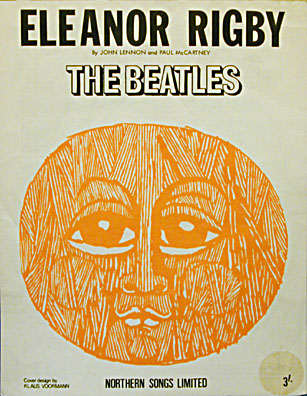 Without warning, Beatles fans (and popular music fans alike) were treated to a side-step into Classical music within the two-minute format of AM pop radio in 1966. Classical music buffs may shudder at my insinuation that “Eleanor Rigby” fits into that genre by any stretch of the imagination, but we can at least view it as a fusion with the popular music form of that era. Funnily enough, Beatles' enthusiasts of that decade (as well as later decades) accept this track as impressively entertaining and not too “high brow” for their taste. Without warning, Beatles fans (and popular music fans alike) were treated to a side-step into Classical music within the two-minute format of AM pop radio in 1966. Classical music buffs may shudder at my insinuation that “Eleanor Rigby” fits into that genre by any stretch of the imagination, but we can at least view it as a fusion with the popular music form of that era. Funnily enough, Beatles' enthusiasts of that decade (as well as later decades) accept this track as impressively entertaining and not too “high brow” for their taste.
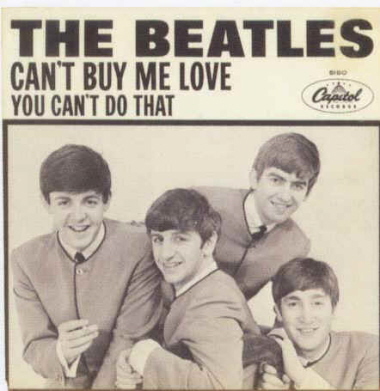 The song's structure consists of a ‘intro/ verse/ verse/ chorus/ verse/ verse/ chorus/ bridge (intro)/ verse/ verse/ chorus (outro)’ format (or abbcbbcabbc). Beginning the proceedings with the bridge (thereby making it an intro to the song) is something that had been done before in their catalog, such as in “Can’t Buy Me Love,” which suggests a possible credit to George Martin for this arrangement element since it was his suggestion on the earlier song. The song's structure consists of a ‘intro/ verse/ verse/ chorus/ verse/ verse/ chorus/ bridge (intro)/ verse/ verse/ chorus (outro)’ format (or abbcbbcabbc). Beginning the proceedings with the bridge (thereby making it an intro to the song) is something that had been done before in their catalog, such as in “Can’t Buy Me Love,” which suggests a possible credit to George Martin for this arrangement element since it was his suggestion on the earlier song.
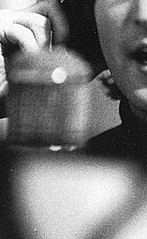 The listener is startled right at the downbeat of the very first measure of the song with its three-part harmony lyric “aaah, look at all the lonely people” (which suspiciously sounds like “lovely people” to a lot of ears) on top of the pulsing quarter notes of the octet of string musicians. The held out sighing melody line of the cellos and saw-like jumping eighth notes of the violins make for a very impressive but busy eight-measure introduction to the song. The listener is startled right at the downbeat of the very first measure of the song with its three-part harmony lyric “aaah, look at all the lonely people” (which suspiciously sounds like “lovely people” to a lot of ears) on top of the pulsing quarter notes of the octet of string musicians. The held out sighing melody line of the cellos and saw-like jumping eighth notes of the violins make for a very impressive but busy eight-measure introduction to the song.
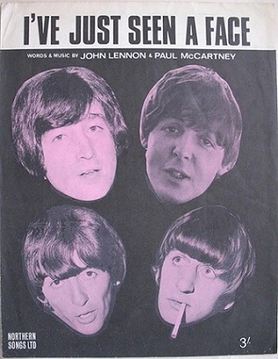 The first five-measure verse is next with Paul singing single-tracked, introducing us to the first character in this sad tale. His melody line repeatedly syncopates in triplet form (“in a church / where a wed / ding has been”) above strident chorded quarter note chops by the full octet of musicians for the first entire verse, with the exception of the cellos raising the melody briefly in the fourth measure. Paul’s British pronunciation of “been” becomes a perfect rhyme with “dream” as it had the previous year with “I’ve Just Seen A Face.” Curiously, the transition back to the home key of E minor appears midway through the fifth measure. The first five-measure verse is next with Paul singing single-tracked, introducing us to the first character in this sad tale. His melody line repeatedly syncopates in triplet form (“in a church / where a wed / ding has been”) above strident chorded quarter note chops by the full octet of musicians for the first entire verse, with the exception of the cellos raising the melody briefly in the fourth measure. Paul’s British pronunciation of “been” becomes a perfect rhyme with “dream” as it had the previous year with “I’ve Just Seen A Face.” Curiously, the transition back to the home key of E minor appears midway through the fifth measure.
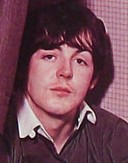 The second five-measure verse appears immediately thereafter with Paul repeating the same melody line. This time, however, the arrangement intensifies with the violins doubling their chorded chops to eighth notes above the cellos quarter notes. The violas play the raising melody line of the fourth measure this time around instead of the cellos. The second five-measure verse appears immediately thereafter with Paul repeating the same melody line. This time, however, the arrangement intensifies with the violins doubling their chorded chops to eighth notes above the cellos quarter notes. The violas play the raising melody line of the fourth measure this time around instead of the cellos.
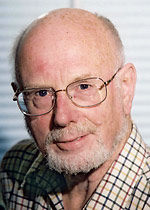 The eight measure chorus then appears in order to interject the overall commentary of the setting, namely “all the lonely people, where do they all come from…where do they all belong.” McCartney’s vocals are now treated with artificial double-tracking to accentuate the song’s message. The violins go back to playing quarter notes while the violas play a twice-repeated four note descending passage above a single bass note being held by the violas. A single violin (no doubt the late Tony Gilbert as first violinist) repeats Paul’s final melody line of the song (“where do they all belong”) in the final measure which actually extends into the first measure of the following verse. The eight measure chorus then appears in order to interject the overall commentary of the setting, namely “all the lonely people, where do they all come from…where do they all belong.” McCartney’s vocals are now treated with artificial double-tracking to accentuate the song’s message. The violins go back to playing quarter notes while the violas play a twice-repeated four note descending passage above a single bass note being held by the violas. A single violin (no doubt the late Tony Gilbert as first violinist) repeats Paul’s final melody line of the song (“where do they all belong”) in the final measure which actually extends into the first measure of the following verse.
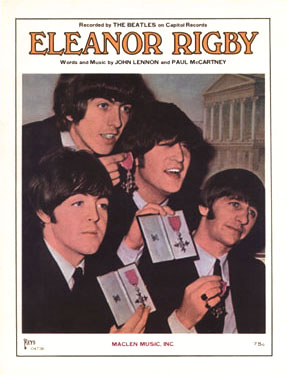 The next two verses follow the same pattern as the first pair but with instrumental accentuations. As Paul introduces “Father Mackenzie” to the story, the cellists interject a low eighth-note run in the fourth measure that tapers off in the fifth. These cellists repeat this same line in the fourth verse but are preceded by a detailed passage by the violas that appears through all five measures. All the while the staccato eighth notes are played by the violins and whoever else is not playing the above passages at that time. The next two verses follow the same pattern as the first pair but with instrumental accentuations. As Paul introduces “Father Mackenzie” to the story, the cellists interject a low eighth-note run in the fourth measure that tapers off in the fifth. These cellists repeat this same line in the fourth verse but are preceded by a detailed passage by the violas that appears through all five measures. All the while the staccato eighth notes are played by the violins and whoever else is not playing the above passages at that time.
 The chorus is then repeated with the exact configuration as heard the first time, with the exception of the single violin playing an ascending passage just after the lyrics “where do they all come from.” While vibrato is decided against in this performance, the final note of this passage requires it. A repeat of the intro is then heard as the bridge of the song, the instrumentalists’ performances identical to a tee, right down to the differing staggered cellist lines of the third and seventh measures. This is the very last we will hear of the three-part harmonies of Paul, John and George. The chorus is then repeated with the exact configuration as heard the first time, with the exception of the single violin playing an ascending passage just after the lyrics “where do they all come from.” While vibrato is decided against in this performance, the final note of this passage requires it. A repeat of the intro is then heard as the bridge of the song, the instrumentalists’ performances identical to a tee, right down to the differing staggered cellist lines of the third and seventh measures. This is the very last we will hear of the three-part harmonies of Paul, John and George.
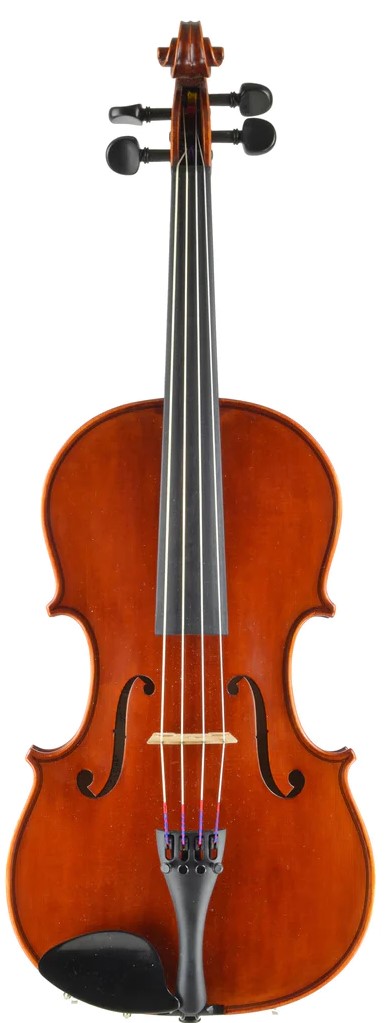 The fifth verse, while melodically structured the same, shows quite a few strategic instrumental differences. While the cellos play a see-saw eighth note pattern for all five measures, the violins hold out a high note throughout all five measures. Meanwhile, the violas play a jarring melodic eighth note melody that starts midway through the second measure on the syncopated word “church.” The sixth verse is also dramatically different, with both the violins and violas playing the staccato quarter notes with the cellos mimicking Paul’s melody line on the words “wiping the dirt from his hands as he walks from the grave” while then slowly descending downward in the final measure. All in all, this dramatic change in arrangement perfectly suits the poignant mood of the lyrics. The fifth verse, while melodically structured the same, shows quite a few strategic instrumental differences. While the cellos play a see-saw eighth note pattern for all five measures, the violins hold out a high note throughout all five measures. Meanwhile, the violas play a jarring melodic eighth note melody that starts midway through the second measure on the syncopated word “church.” The sixth verse is also dramatically different, with both the violins and violas playing the staccato quarter notes with the cellos mimicking Paul’s melody line on the words “wiping the dirt from his hands as he walks from the grave” while then slowly descending downward in the final measure. All in all, this dramatic change in arrangement perfectly suits the poignant mood of the lyrics.
 The final repeat of the chorus is quite similar arrangement-wise to the first chorus except for two obvious additions. No doubt because of the absence of the ascending violin line heard in the second chorus, the decision was made for Paul to overdub a solo vocal reprise of the “aah, look at all the lonely people” melody line of the intro/bridge to superimpose two characteristic elements of the recording and distinguish the conclusion for a big final impression. Additionally, the single violin melody line of the eighth measure is confined to quarter notes and joined in harmony by the rest of the string octet to round off the arrangement for a suitable ending. The final repeat of the chorus is quite similar arrangement-wise to the first chorus except for two obvious additions. No doubt because of the absence of the ascending violin line heard in the second chorus, the decision was made for Paul to overdub a solo vocal reprise of the “aah, look at all the lonely people” melody line of the intro/bridge to superimpose two characteristic elements of the recording and distinguish the conclusion for a big final impression. Additionally, the single violin melody line of the eighth measure is confined to quarter notes and joined in harmony by the rest of the string octet to round off the arrangement for a suitable ending.
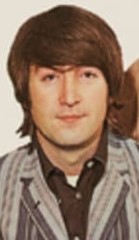 Paul’s vocal performance is stunning in its simplicity while "spot on" in pitch. His delivery conveys the stark despair of his story perfectly. John and George’s harmonies, while not intrinsically important, nonetheless are performed well and add a “Beatle-ness” to the song. (And shame on you, John, for singing “lovely people” or "lowly people" instead of “lonely,” if that is what you did…that would be something he would do. :-) ) Paul’s vocal performance is stunning in its simplicity while "spot on" in pitch. His delivery conveys the stark despair of his story perfectly. John and George’s harmonies, while not intrinsically important, nonetheless are performed well and add a “Beatle-ness” to the song. (And shame on you, John, for singing “lovely people” or "lowly people" instead of “lonely,” if that is what you did…that would be something he would do. :-) )
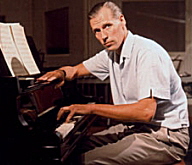 The arrangement scored by George Martin was designed for a string quartet and was doubled for the eight musicians in the double-string quartet, two instrumentalists playing the same part. This is the pattern used throughout with the exception of the solo violin lines mentioned above. So instrumental and intricate was this arrangement that one asserts (dare I say) that George Martin surely deserves a songwriting credit. “Lennon / McCartney” definitely doesn’t cut it in this case – maybe “McCartney / Martin / Lennon / Starkey / Harrison / Shotton.” Don’t shoot me…it’s just a thought. The arrangement scored by George Martin was designed for a string quartet and was doubled for the eight musicians in the double-string quartet, two instrumentalists playing the same part. This is the pattern used throughout with the exception of the solo violin lines mentioned above. So instrumental and intricate was this arrangement that one asserts (dare I say) that George Martin surely deserves a songwriting credit. “Lennon / McCartney” definitely doesn’t cut it in this case – maybe “McCartney / Martin / Lennon / Starkey / Harrison / Shotton.” Don’t shoot me…it’s just a thought.
 As was his soon-to-be-established pattern, McCartney took to introducing characters and painting a vivid picture (arguably his most vivid) of their story. First off, though, he expresses his observance of “all the lonely people,” then beginning with his first example of a lonely person, “Eleanor Rigby.” She is seen picking up “the rice in a church where a wedding has been.” He then gives the first of six four-syllable dour opinions of the situation found in the song, which are all found in the final measure of the verses. This one is “lives in a dream.” As was his soon-to-be-established pattern, McCartney took to introducing characters and painting a vivid picture (arguably his most vivid) of their story. First off, though, he expresses his observance of “all the lonely people,” then beginning with his first example of a lonely person, “Eleanor Rigby.” She is seen picking up “the rice in a church where a wedding has been.” He then gives the first of six four-syllable dour opinions of the situation found in the song, which are all found in the final measure of the verses. This one is “lives in a dream.”
Her loneliness is then depicted in the second verse by her waiting “at the window, wearing a face that she keeps in a jar by the door,” possibly inferring to the make-up she regularly applies. The final dour opinion this time, since she lives alone and has few if any acquaintances, is “who is it for?”
 After reiterating his sad observance of “all the lonely people, where do they all come from…where do they all belong,” he then introduces a seemingly unrelated person named “Father Mackenzie,” who then purposelessly writes “the words of a sermon that no one will hear,” possibly reflecting the decline in religious values that Lennon referred to with his “we’re bigger than Jesus” statement uttered that same year. The dour statement “no one comes near” is followed by a very lonely depiction of him “darning his socks in the night when there’s nobody there,” volunteered celibacy discounting a wife to perform this task for him. But, as the next dour statement asserts, “what does he care?” After reiterating his sad observance of “all the lonely people, where do they all come from…where do they all belong,” he then introduces a seemingly unrelated person named “Father Mackenzie,” who then purposelessly writes “the words of a sermon that no one will hear,” possibly reflecting the decline in religious values that Lennon referred to with his “we’re bigger than Jesus” statement uttered that same year. The dour statement “no one comes near” is followed by a very lonely depiction of him “darning his socks in the night when there’s nobody there,” volunteered celibacy discounting a wife to perform this task for him. But, as the next dour statement asserts, “what does he care?”
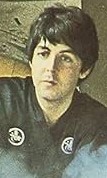 Then the two characters intermingle but tragically. Eleanor “died in the church and was buried along with her name,” probably referring to her name dying along with her, not being in the memory of family or friends. This view is substantiated by the following dour statement from Paul, “nobody came.” The lonely priest was the one who performed the eulogy and is depicted as “wiping the dirt from his hands as he walks from the grave.” Paul's final statement, “no one was saved,” could also be in connection with the lessened spiritual values evident during that time period. Then the two characters intermingle but tragically. Eleanor “died in the church and was buried along with her name,” probably referring to her name dying along with her, not being in the memory of family or friends. This view is substantiated by the following dour statement from Paul, “nobody came.” The lonely priest was the one who performed the eulogy and is depicted as “wiping the dirt from his hands as he walks from the grave.” Paul's final statement, “no one was saved,” could also be in connection with the lessened spiritual values evident during that time period.
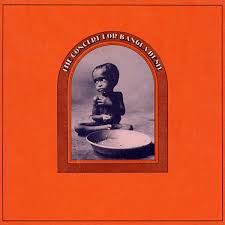 George Harrison may have pricked our conscious to help those in Bangladesh, and John Lennon may have promoted the use of creative affirmations to bring about an imagined world of “living life in peace,” but first it was Paul, as expressed in his final thought in “Eleanor Rigby,” namely, “all the lonely people, where do they all belong,” that tugged at our heart in a way that created in us a desire to give attention to the depressed souls that surround us right in our own community. That seems to me like a good place to start. George Harrison may have pricked our conscious to help those in Bangladesh, and John Lennon may have promoted the use of creative affirmations to bring about an imagined world of “living life in peace,” but first it was Paul, as expressed in his final thought in “Eleanor Rigby,” namely, “all the lonely people, where do they all belong,” that tugged at our heart in a way that created in us a desire to give attention to the depressed souls that surround us right in our own community. That seems to me like a good place to start.
American Releases
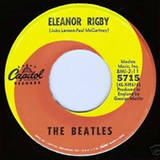 August 8th, 1966 was the official release of “Eleanor Rigby” in the US in two forms – as a single and on an album. In Britain, this song and “Yellow Submarine” were paired together and promoted as yet another double a-side, following the pattern set by the “We Can Work It Out / Day Tripper” single the previous December. Capitol followed suit in America by issuing both songs on the same disc with encouragement to radio stations to play both sides of the 45. However, because of procedures practiced by the US charts at the time, the Billboard Hot 100 tabulated “Yellow Submarine” as the bigger hit (peaking at #2) with “Eleanor Rigby” the lesser hit (peaking at #11). Although this was nothing to sneeze at, success was somewhat hindered because of the ban placed by dozens of American radio stations due to John’s “We’re more popular than Jesus” comment to the press. August 8th, 1966 was the official release of “Eleanor Rigby” in the US in two forms – as a single and on an album. In Britain, this song and “Yellow Submarine” were paired together and promoted as yet another double a-side, following the pattern set by the “We Can Work It Out / Day Tripper” single the previous December. Capitol followed suit in America by issuing both songs on the same disc with encouragement to radio stations to play both sides of the 45. However, because of procedures practiced by the US charts at the time, the Billboard Hot 100 tabulated “Yellow Submarine” as the bigger hit (peaking at #2) with “Eleanor Rigby” the lesser hit (peaking at #11). Although this was nothing to sneeze at, success was somewhat hindered because of the ban placed by dozens of American radio stations due to John’s “We’re more popular than Jesus” comment to the press.
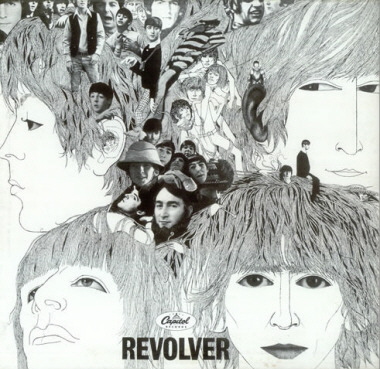 Simultaneous with the single was “Eleanor Rigby” being the second track on the album “Revolver,” this also coming out on August 8th, 1966. Following the explosively cynical tone of George's “Taxman,” this poignant portrayal of the death of a elderly spinster with full orchestral accompaniment was quite a departure from the fun-loving “mop tops” of the previous two years. Six weeks in the top spot on the Billboard album chart showed that the American public accepted their growth with open arms. The American version of the "Revolver" album got a compact disc release on January 21st, 2014, with both the mono and stereo versions contained on a single CD. Simultaneous with the single was “Eleanor Rigby” being the second track on the album “Revolver,” this also coming out on August 8th, 1966. Following the explosively cynical tone of George's “Taxman,” this poignant portrayal of the death of a elderly spinster with full orchestral accompaniment was quite a departure from the fun-loving “mop tops” of the previous two years. Six weeks in the top spot on the Billboard album chart showed that the American public accepted their growth with open arms. The American version of the "Revolver" album got a compact disc release on January 21st, 2014, with both the mono and stereo versions contained on a single CD.
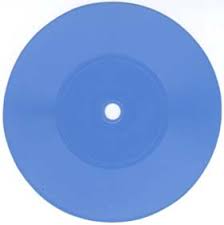 Sometime toward the end of 1966, a new single format was being tested called "Pocket Discs," which were 3.75" flexible discs that could be carried "on the go" (as the manufacturers claimed) in your pocket until you got to a friend's house or somewhere else that had a record player. These were manufactured by Americom with licenses from record labels, such as Capitol, to release new singles in this alternate format. Test pressings were made of the single "Yellow Submarine / Eleanor Rigby" on either light blue or red flexible vinyl but none were sold to the general public. Collectors today will pay thousands of dollars for an existing copy. Sometime toward the end of 1966, a new single format was being tested called "Pocket Discs," which were 3.75" flexible discs that could be carried "on the go" (as the manufacturers claimed) in your pocket until you got to a friend's house or somewhere else that had a record player. These were manufactured by Americom with licenses from record labels, such as Capitol, to release new singles in this alternate format. Test pressings were made of the single "Yellow Submarine / Eleanor Rigby" on either light blue or red flexible vinyl but none were sold to the general public. Collectors today will pay thousands of dollars for an existing copy.
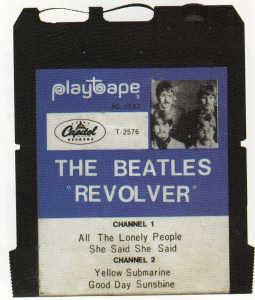 In 1967, Capitol released Beatles music on a brand new but short-lived format called "Playtapes." These tape cartridges did not have the capability to include entire albums, so two four-song versions of "Revolver" were released in this portable format, "Eleanor Rigby" being on one of these, although it was mistakenly listed as "All The Lonely People." These rare Beatles "Playtapes" are highly collectable today In 1967, Capitol released Beatles music on a brand new but short-lived format called "Playtapes." These tape cartridges did not have the capability to include entire albums, so two four-song versions of "Revolver" were released in this portable format, "Eleanor Rigby" being on one of these, although it was mistakenly listed as "All The Lonely People." These rare Beatles "Playtapes" are highly collectable today
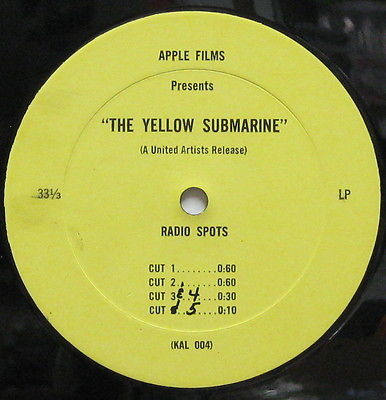 Presumably sometime in November of 1968, a 12 inch promotional album was distributed to radio stations which contained five commercials to be broadcast in promotion of the animated film "Yellow Submarine." The label on this one-sided disc (the other side of the album was blank) read "Apple Films Presents 'The Yellow Sumbarine' (A United Artists Release)" and contained two 60-second spots, two 30-second spots and one 10-second spot. A small segment of "Eleanor Rigby" is heard in some of these radio spots. Presumably sometime in November of 1968, a 12 inch promotional album was distributed to radio stations which contained five commercials to be broadcast in promotion of the animated film "Yellow Submarine." The label on this one-sided disc (the other side of the album was blank) read "Apple Films Presents 'The Yellow Sumbarine' (A United Artists Release)" and contained two 60-second spots, two 30-second spots and one 10-second spot. A small segment of "Eleanor Rigby" is heard in some of these radio spots.
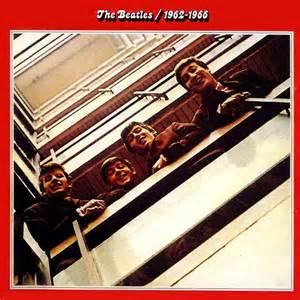 The first official Beatles compilation album appeared on April 2nd, 1973, this being “The Beatles/1962-1966” (aka “The Red Album”). Surprisingly, only two songs from “Revolver” made it onto this double album, compared to six from the British “Rubber Soul” album. Both sides of the “Revolver” single from 1966 were the obvious choices. Peaking at only #3 on the Billboard album chart was a blow that was easily softened by the fact that its companion album “The Beatles/1967-1970” was at #1 at the same time. This set was released on compact disc on September 20th, 1993 and then its remastered version came out on October 19th, 2010. The first official Beatles compilation album appeared on April 2nd, 1973, this being “The Beatles/1962-1966” (aka “The Red Album”). Surprisingly, only two songs from “Revolver” made it onto this double album, compared to six from the British “Rubber Soul” album. Both sides of the “Revolver” single from 1966 were the obvious choices. Peaking at only #3 on the Billboard album chart was a blow that was easily softened by the fact that its companion album “The Beatles/1967-1970” was at #1 at the same time. This set was released on compact disc on September 20th, 1993 and then its remastered version came out on October 19th, 2010.
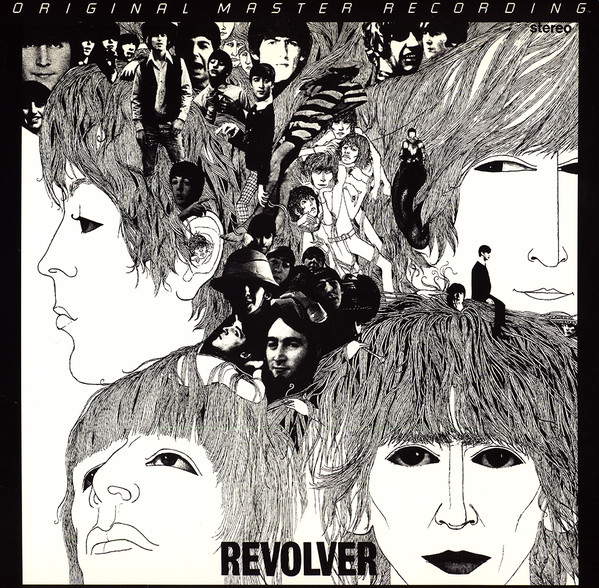 The first time the original British "Revolver” album was made available in America was the "Original Master Recording" vinyl edition released through Mobile Fidelity Sound Lab sometime in 1985. This album included "Eleanor Rigby" and was prepared utilizing half-speed mastering technology from the original master tape on loan from EMI. This version of the album was only available for a short time and is quite collectible today. The first time the original British "Revolver” album was made available in America was the "Original Master Recording" vinyl edition released through Mobile Fidelity Sound Lab sometime in 1985. This album included "Eleanor Rigby" and was prepared utilizing half-speed mastering technology from the original master tape on loan from EMI. This version of the album was only available for a short time and is quite collectible today.
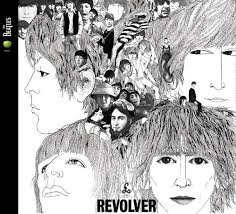 However, the first appearance of “Eleanor Rigby” on compact disc was on the April 30th, 1987 released “Revolver” album, a vinyl edition being released on July 21st, 1987. This was then remastered and re-released on CD on September 9th, 2009 and on vinyl on November 13th, 2012. A remarkable newly mixed edition of "Revolver" created by Giles Martin was released on vinyl and CD on October 28th, 2022. However, the first appearance of “Eleanor Rigby” on compact disc was on the April 30th, 1987 released “Revolver” album, a vinyl edition being released on July 21st, 1987. This was then remastered and re-released on CD on September 9th, 2009 and on vinyl on November 13th, 2012. A remarkable newly mixed edition of "Revolver" created by Giles Martin was released on vinyl and CD on October 28th, 2022.
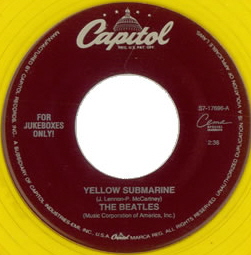 In February of 1994, Capitol re-issued the single in their Cema series “For Jukeboxes Only” on yellow vinyl, not surprising due to the “Yellow Submarine” side being considered by most in America as the a-side of the single. This single is quite rare today and is becoming even more so as time marches on. In February of 1994, Capitol re-issued the single in their Cema series “For Jukeboxes Only” on yellow vinyl, not surprising due to the “Yellow Submarine” side being considered by most in America as the a-side of the single. This single is quite rare today and is becoming even more so as time marches on.
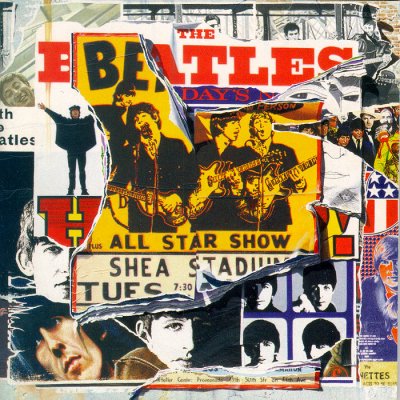 On March 18th, 1996, the highly anticipated “Anthology 2” set was released, featuring the completely instrumental version of “Eleanor Rigby” created especially by George Martin. Like its predecessor “Anthology 1,” it also topped the Billboard album charts. On March 18th, 1996, the highly anticipated “Anthology 2” set was released, featuring the completely instrumental version of “Eleanor Rigby” created especially by George Martin. Like its predecessor “Anthology 1,” it also topped the Billboard album charts.
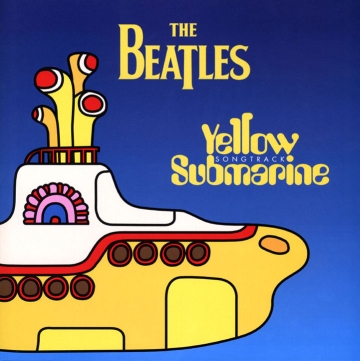 September 13th, 1999 was the release date of “Yellow Submarine Songtrack,” which was put together as a companion piece to the recently re-released video/DVD of the movie. While “Eleanor Rigby” did not appear on the original “Yellow Submarine” soundtrack released in 1969, it had a prominent role in the film which earned it a spot on this new release. A newly mixed and remastered version of the song makes it sound more vibrant than ever. Sadly, this version did not make it onto the newly remastered releases of 2009, keeping instead to the official mix of the song from 1966. The album peaked at #15 on the Billboard album chart. The new 1999 mix of "Eleanor Rigby," however, was also included on the promotional sampler of the "Yellow Submarine Songtrack" album, which was released simultaneously. September 13th, 1999 was the release date of “Yellow Submarine Songtrack,” which was put together as a companion piece to the recently re-released video/DVD of the movie. While “Eleanor Rigby” did not appear on the original “Yellow Submarine” soundtrack released in 1969, it had a prominent role in the film which earned it a spot on this new release. A newly mixed and remastered version of the song makes it sound more vibrant than ever. Sadly, this version did not make it onto the newly remastered releases of 2009, keeping instead to the official mix of the song from 1966. The album peaked at #15 on the Billboard album chart. The new 1999 mix of "Eleanor Rigby," however, was also included on the promotional sampler of the "Yellow Submarine Songtrack" album, which was released simultaneously.
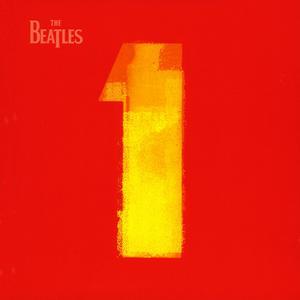 Being that the song was considered part of a double a-side single in Britain, it was included on the highly successful single CD “Beatles 1,” which was released on November 13th, 2000. With eight weeks at the top of the Billboard charts and over 11 million copies sold, it ranks as the biggest selling Beatles album of all time in the US, not to mention selling over 31 million copies worldwide as of 2017. A remastered version of this album was released in September of 2011 and a newly remixed version was released on November 6th, 2015. Being that the song was considered part of a double a-side single in Britain, it was included on the highly successful single CD “Beatles 1,” which was released on November 13th, 2000. With eight weeks at the top of the Billboard charts and over 11 million copies sold, it ranks as the biggest selling Beatles album of all time in the US, not to mention selling over 31 million copies worldwide as of 2017. A remastered version of this album was released in September of 2011 and a newly remixed version was released on November 6th, 2015.
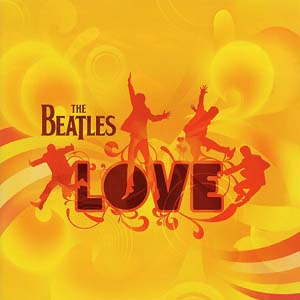 On November 20th, 2006, the new Cirque du Soleil soundtrack “Love” was released to critical acclaim. The newly created mix, part instrumental and part vocal, of “Eleanor Rigby” featured prominently on the album which peaked at #4 on the Billboard album chart. On November 20th, 2006, the new Cirque du Soleil soundtrack “Love” was released to critical acclaim. The newly created mix, part instrumental and part vocal, of “Eleanor Rigby” featured prominently on the album which peaked at #4 on the Billboard album chart.
 For purists who want to own the original 1966 mono mix but in a vibrant remastered condition, the box set “The Beatles In Mono” is for you. This all-inclusive CD set, featuring all of the original mono mixes of the '60s (and some unavailable stereo mixes as well) was released on September 9th, 2009, the vinyl edition coming out on September 9th, 2014. For purists who want to own the original 1966 mono mix but in a vibrant remastered condition, the box set “The Beatles In Mono” is for you. This all-inclusive CD set, featuring all of the original mono mixes of the '60s (and some unavailable stereo mixes as well) was released on September 9th, 2009, the vinyl edition coming out on September 9th, 2014.
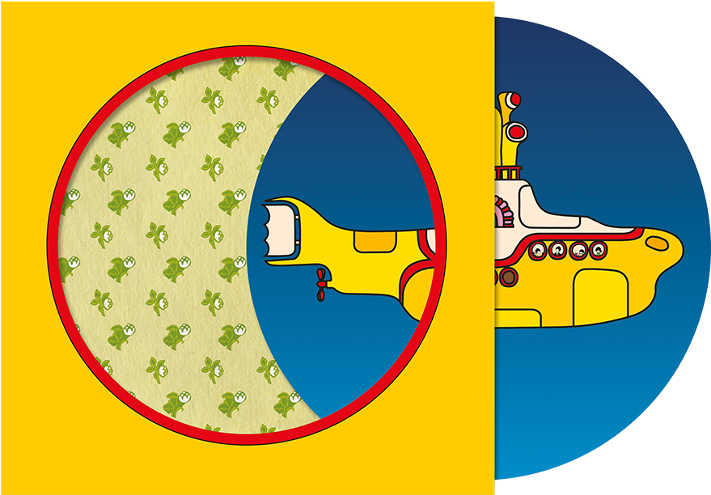 On July 6th, 2018, the "Yellow Sumbarine / Eleanor Rigby" single was re-released as a limited edition picture disc in celebration of the 50th Anniversary release of the classic "Yellow Submarine" animated film. On July 6th, 2018, the "Yellow Sumbarine / Eleanor Rigby" single was re-released as a limited edition picture disc in celebration of the 50th Anniversary release of the classic "Yellow Submarine" animated film.
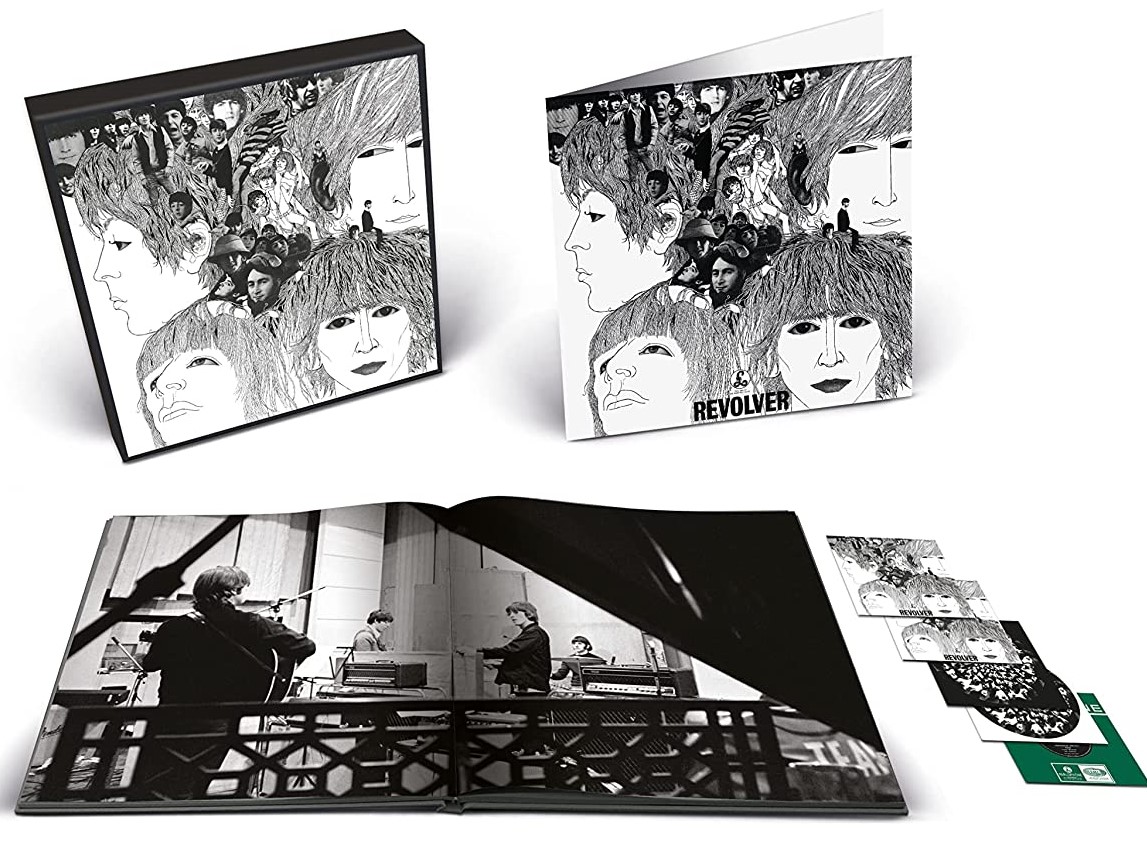 On October 28th, 2022, various new editions of the 14 track “Revolver” album were released that feature the amazing new stereo mix by Giles Martin. The “Special Edition Deluxe 2CD Set” features “Eleanor Rigby” in its new stereo mix as well as the instrumental “take 2” from the 1966 session tapes. The “Deluxe Edition,” which is available as a 5 CD box set and a 4LP / 1 EP box set, includes these versions as well as a track of "speech before take 2" and the original mono master from 1966. The 2022 Giles Martin stereo mix of the album was also made available for the first time as a vinyl picture disc for a limited time. On October 28th, 2022, various new editions of the 14 track “Revolver” album were released that feature the amazing new stereo mix by Giles Martin. The “Special Edition Deluxe 2CD Set” features “Eleanor Rigby” in its new stereo mix as well as the instrumental “take 2” from the 1966 session tapes. The “Deluxe Edition,” which is available as a 5 CD box set and a 4LP / 1 EP box set, includes these versions as well as a track of "speech before take 2" and the original mono master from 1966. The 2022 Giles Martin stereo mix of the album was also made available for the first time as a vinyl picture disc for a limited time.
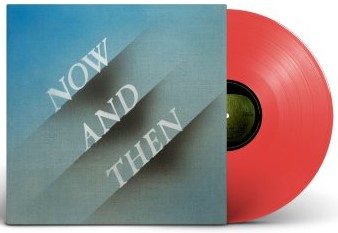 As detailed above, the vocal harmonies from "Eleanor Rigby" were inserted into the last Beatles song "Now And Then," this single being released on November 2nd, 2023 and then included on the newly re-mixed version of "The Beatles / 1967 - 1970" ("The Blue Album") being released on November 10th, 2023. As detailed above, the vocal harmonies from "Eleanor Rigby" were inserted into the last Beatles song "Now And Then," this single being released on November 2nd, 2023 and then included on the newly re-mixed version of "The Beatles / 1967 - 1970" ("The Blue Album") being released on November 10th, 2023.
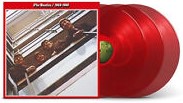 A 50th Anniversay edition of the compilation album "The Beatles / 1962 - 1966" (aka "The Red Album") was released on November 10th, 2023, the newer Giles Martin stereo mix of "Eleanor Rigby," as detailed above, being included. This expanded release included 12 additional songs for a total of 38 tracks, and was made available as a double CD and as a triple vinyl release on both black and red vinyl. A 50th Anniversay edition of the compilation album "The Beatles / 1962 - 1966" (aka "The Red Album") was released on November 10th, 2023, the newer Giles Martin stereo mix of "Eleanor Rigby," as detailed above, being included. This expanded release included 12 additional songs for a total of 38 tracks, and was made available as a double CD and as a triple vinyl release on both black and red vinyl.
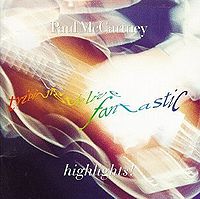 A few McCartney albums also feature the song, the first being the soundtrack to his film “Give My Regards To Broad Street,” which was released on October 22nd, 1984 (peaking at #21 on Billboard). This was a newly recorded studio performance of "Eleanor Rigby." Many of his live albums also feature the song, the first being “Tripping The Live Fantastic,” released on November 5th, 1990 (peaking at #17), followed by “Tripping The Live Fantastic: Highlights!,” released on November 12th, 1990 (peaking at # 141), “Back In The US,” released on November 11th, 2002 (peaking at #8), and “Good Evening New York City,” released on November 17th, 2009 (peaking at #16). A few McCartney albums also feature the song, the first being the soundtrack to his film “Give My Regards To Broad Street,” which was released on October 22nd, 1984 (peaking at #21 on Billboard). This was a newly recorded studio performance of "Eleanor Rigby." Many of his live albums also feature the song, the first being “Tripping The Live Fantastic,” released on November 5th, 1990 (peaking at #17), followed by “Tripping The Live Fantastic: Highlights!,” released on November 12th, 1990 (peaking at # 141), “Back In The US,” released on November 11th, 2002 (peaking at #8), and “Good Evening New York City,” released on November 17th, 2009 (peaking at #16).
Live Performances
Since touring in 1966 with a double-string quartet was not quite in the budget, The Beatles were not able to perform “Eleanor Rigby” on stage during their tours of that year. However, with the dawning of the synthesizer age, Paul took the effort to give many live performances of the song during his concert career.
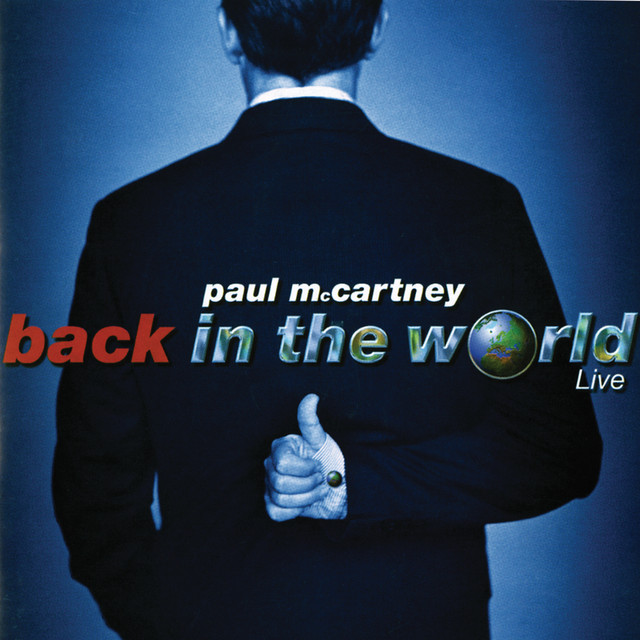 His first performances of the song were during his “World Tour” of 1989/1990, spanning from September 26th, 1989 to July 29th, 1990. Then his brief “Driving USA” Tour of 2002 resumed including “Eleanor Rigby” in the set list, this tour going from April 1st to May 18th of that year. His “Back In The U.S.” tour of later that year also included the song, this tour spanning from September 21st to October 29th. Both his “Driving Mexico” tour (November 2nd to 5th, 2002) and his “Driving Japan” tour (November 11th to 18th, 2002) included the song as well. His entire international “Back In The World” tour of 2003 (March 25th to June 1st) included the song, as did his “2004 Summer Tour” (May 25th to June 26th). His 2005 “US Tour” continued use of the song (September 16th to November 30th) as did his brief “Summer Live ‘09” tour (July 11th to August 19th). His “Good Evening Europe Tour” of 2009 included the song (December 2nd through 22nd) as did his seemingly endless “Up And Coming Tour,” which spanned from March 28th, 2010 through June 10th, 2011. His first performances of the song were during his “World Tour” of 1989/1990, spanning from September 26th, 1989 to July 29th, 1990. Then his brief “Driving USA” Tour of 2002 resumed including “Eleanor Rigby” in the set list, this tour going from April 1st to May 18th of that year. His “Back In The U.S.” tour of later that year also included the song, this tour spanning from September 21st to October 29th. Both his “Driving Mexico” tour (November 2nd to 5th, 2002) and his “Driving Japan” tour (November 11th to 18th, 2002) included the song as well. His entire international “Back In The World” tour of 2003 (March 25th to June 1st) included the song, as did his “2004 Summer Tour” (May 25th to June 26th). His 2005 “US Tour” continued use of the song (September 16th to November 30th) as did his brief “Summer Live ‘09” tour (July 11th to August 19th). His “Good Evening Europe Tour” of 2009 included the song (December 2nd through 22nd) as did his seemingly endless “Up And Coming Tour,” which spanned from March 28th, 2010 through June 10th, 2011.
 His "On The Run" tour included the song as well, this tour spanning from July 15th, 2011 to November 29th, 2012. He also included it in his "Out There!" tour, which began on May 4th, 2013 and ended on October 22nd, 2015. His "One On One" tour also featured the song, this tour running from April 13th, 2016 to December 16th, 2017. Then, his "Freshen Up" tour included the song, which began on September 17th, 2018 and concluded on July 13th, 2019 at Dodger Stadium in Los Angeles, California. His "On The Run" tour included the song as well, this tour spanning from July 15th, 2011 to November 29th, 2012. He also included it in his "Out There!" tour, which began on May 4th, 2013 and ended on October 22nd, 2015. His "One On One" tour also featured the song, this tour running from April 13th, 2016 to December 16th, 2017. Then, his "Freshen Up" tour included the song, which began on September 17th, 2018 and concluded on July 13th, 2019 at Dodger Stadium in Los Angeles, California.
We are also treated to a brief demonstration of Paul playing the song on piano on his 2021 Hulu documentary series "McCartney 3,2,1," which I thought was worthy of a mention.
Conclusion
 The professional piano teacher from the Guildhall School of Music whom Paul premiered “Eleanor Rigby” for in early 1966 may not have thought much of it, but he thought of it as a true breakthrough in his songwriting career – something that might steer him into the future: The professional piano teacher from the Guildhall School of Music whom Paul premiered “Eleanor Rigby” for in early 1966 may not have thought much of it, but he thought of it as a true breakthrough in his songwriting career – something that might steer him into the future:
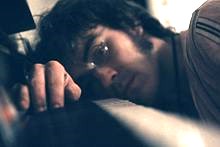 “I remember thinking to myself, ‘What am I going to do when I’m thirty?,’” he recalled. “Thirty was the big age. ‘Will I still be in a group?’ I remember being round at John Dunbar’s house, having a very clear vision of myself in a herringbone jacket with leather elbow patches and a pipe, thinking ‘”Eleanor Rigby,” this could be a way I could go – I could become a more serious writer, not so much a pop writer.’ It was the first inklings of what I’m starting to get into now, writing a solo piano piece, writing a piece for classical orchestra or the ‘Liverpool Oratorio.’ I never did get into it then – I just stayed in pop. But I remember imagining myself with the patches, thinking, ‘Yes, it wouldn’t be bad actually. Be quite a good thing – at the terrible old age of thirty!’” “I remember thinking to myself, ‘What am I going to do when I’m thirty?,’” he recalled. “Thirty was the big age. ‘Will I still be in a group?’ I remember being round at John Dunbar’s house, having a very clear vision of myself in a herringbone jacket with leather elbow patches and a pipe, thinking ‘”Eleanor Rigby,” this could be a way I could go – I could become a more serious writer, not so much a pop writer.’ It was the first inklings of what I’m starting to get into now, writing a solo piano piece, writing a piece for classical orchestra or the ‘Liverpool Oratorio.’ I never did get into it then – I just stayed in pop. But I remember imagining myself with the patches, thinking, ‘Yes, it wouldn’t be bad actually. Be quite a good thing – at the terrible old age of thirty!’”
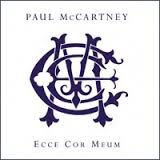 While he may have decided to forego the herringbone jacket, Paul did go down this path with four classical albums, beginning with “Liverpool Oratorio” in 1991. While this was his most successful album of this sort in the US (peaking at #177 on Billboard), his most recent, “Ecce Cor Meum” from 2006, was the highest charting of these albums in Britain (#141). While he may have decided to forego the herringbone jacket, Paul did go down this path with four classical albums, beginning with “Liverpool Oratorio” in 1991. While this was his most successful album of this sort in the US (peaking at #177 on Billboard), his most recent, “Ecce Cor Meum” from 2006, was the highest charting of these albums in Britain (#141).
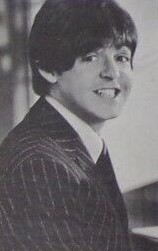 While no medium of musicianship seems to be above the spectrum that Paul can tackle, his outstanding track record as a pop/rock songwriter / musician / singer thankfully appears to be where he shines the most. And we can be equally grateful that he chose to fix his attention in this genre for the majority of his career. In this arena, “Eleanor Rigby” shines as a striking example of what Paul McCartney, and collectively the immense talents of The Beatles, was capable of achieving. Bravo! While no medium of musicianship seems to be above the spectrum that Paul can tackle, his outstanding track record as a pop/rock songwriter / musician / singer thankfully appears to be where he shines the most. And we can be equally grateful that he chose to fix his attention in this genre for the majority of his career. In this arena, “Eleanor Rigby” shines as a striking example of what Paul McCartney, and collectively the immense talents of The Beatles, was capable of achieving. Bravo!
Song Summary
“Eleanor Rigby”
Written by: John Lennon / Paul McCartney
-
Song Written: January – April 29, 1966
-
Song Recorded: April 28, 29 & June 6, 1966
-
First US Release Date: August 8, 1966
-
US Single Release: Capitol #5715
-
Highest Chart Position: #11
-
First US Album Release: Capitol #ST-2576 “Revolver”
-
British Album Release: Parlophone #PCS 7009 “Revolver”
-
Length: 2:11
-
Key: E minor
-
Producer: George Martin
-
Engineers: Geoff Emerick, Phil McDonald
Instrumentation:
-
Paul McCartney - Lead and Background Vocals
-
John Lennon - Harmony Vocals
-
George Harrison – Harmony Vocals
-
Tony Gilbert – First Violin
-
Sidney Sax - Violin
-
John Sharpe - Violin
-
Jurgen Hess - Violin
-
Stephen Shingles - Viola
-
John Underwood - Viola
-
Derek Simpson - Cello
-
Norman Jones - Cello
Written and compiled by Dave Rybaczewski
|
IF YOU WOULD LIKE TO MAKE A DONATION TO KEEP THIS WEBSITE UP AND RUNNING, PLEASE CLICK BELOW!
Sign Up Below for our MONTHLY BEATLES TRIVIA QUIZ!
|